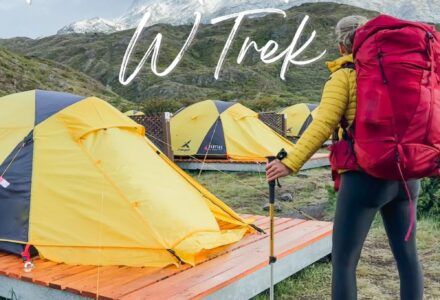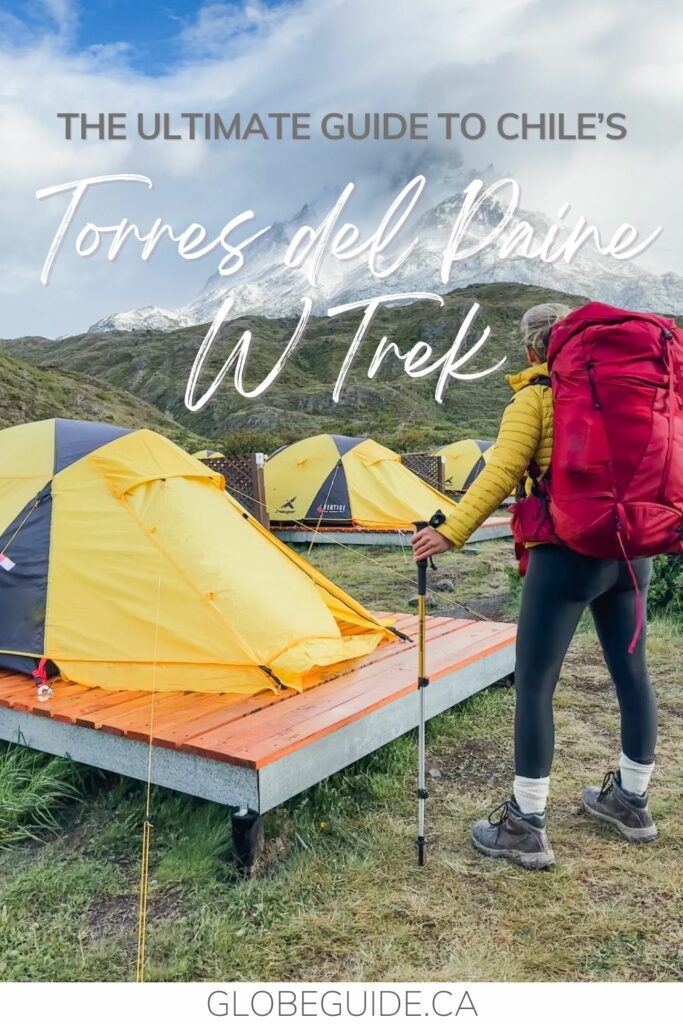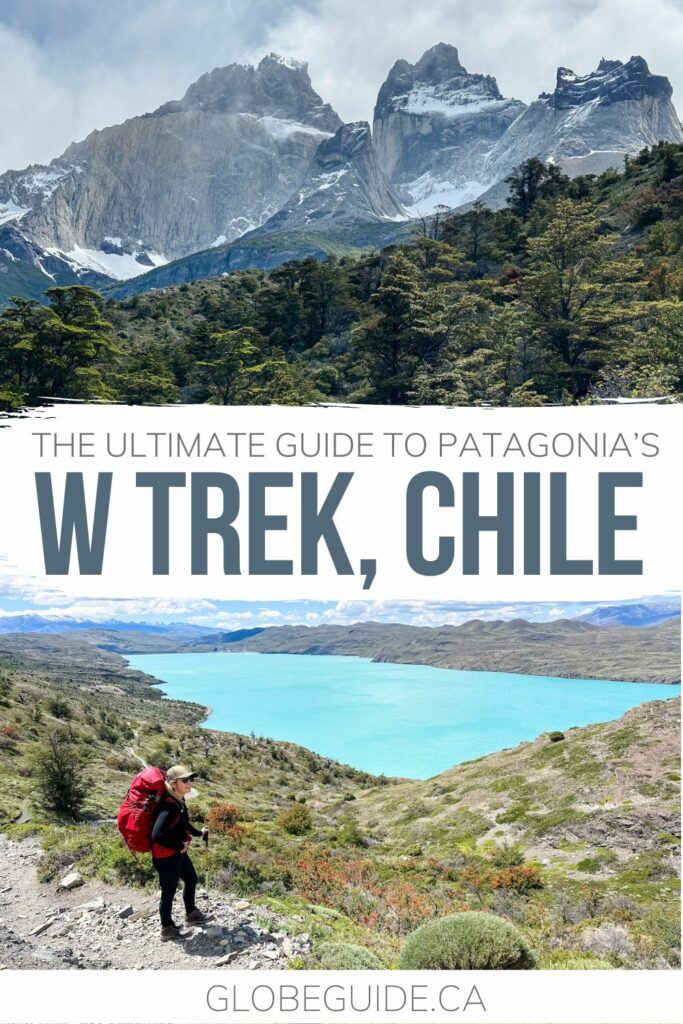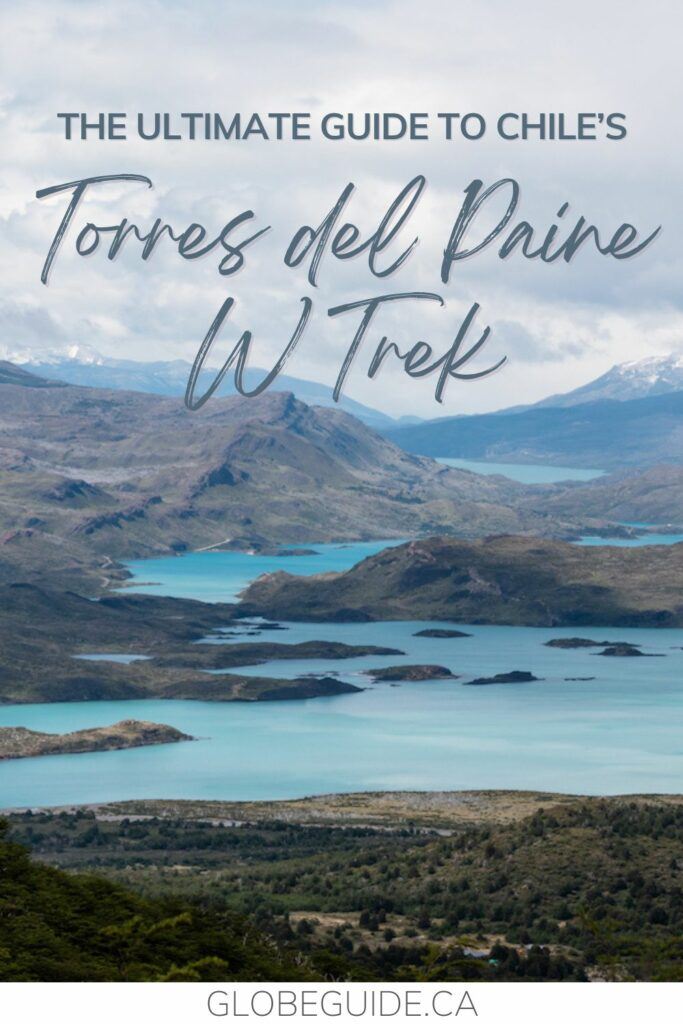The W Trek in Chile is one of the hardest things I’ve ever done. And that’s coming from someone who thought it would be a good idea to cycle across the entire country of Jordan.
Now that we’ve got that out of the way, let me tell you why hiking in Torres del Paine National Park is also one of the most rewarding travel experiences I’ve had.
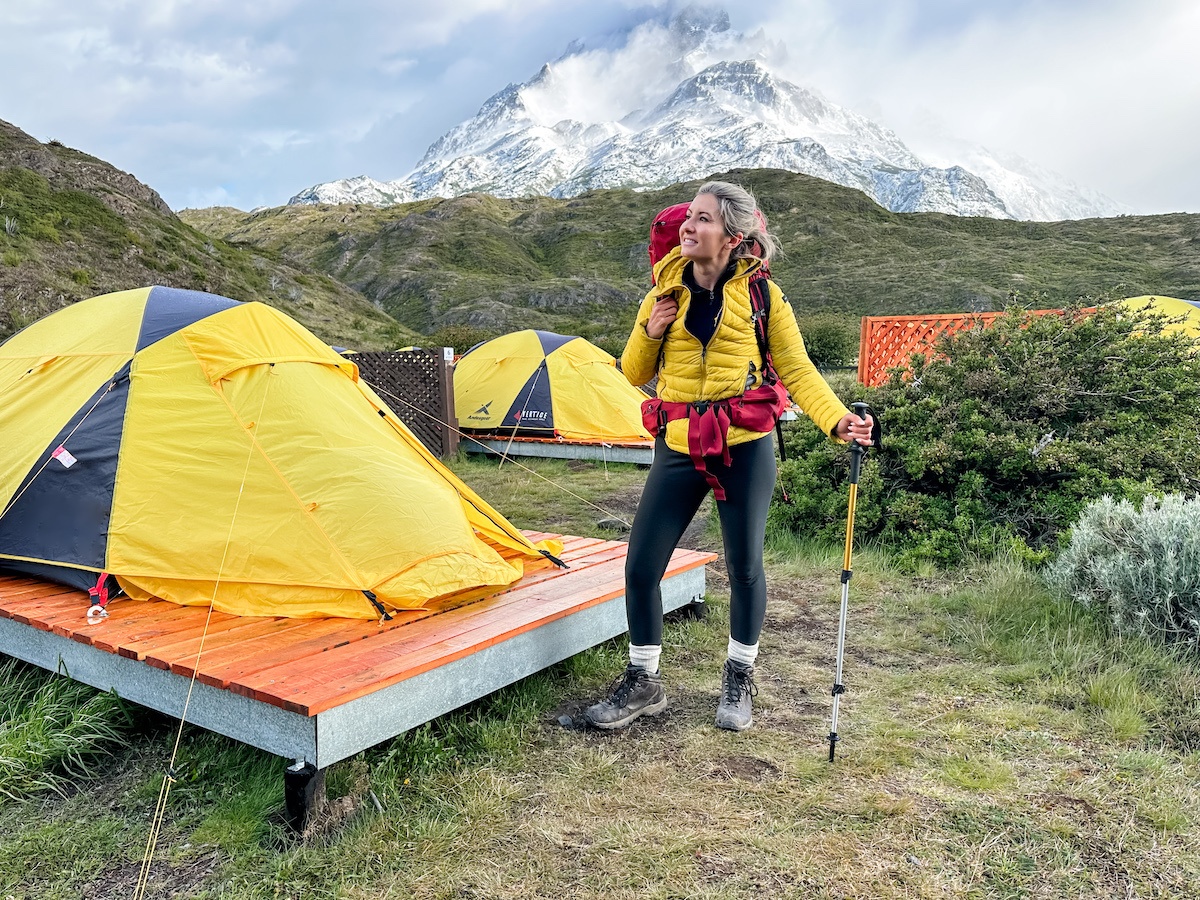
It’s rare to find an adventure that pushes your physical limits every single day, has you cursing under your breath more times than you can count as you face yet another sloshy water crossing or steep incline with a fully loaded pack on your back, and leaves you with aches, sore muscles and a few bruises on account of the inevitable stumbles over rogue rocks.
Yet, at the end of this multi-day grind, the feeling of accomplishment is unmatched. You just trekked through freaking Patagonia, one of the most remote and picturesque places on the planet!
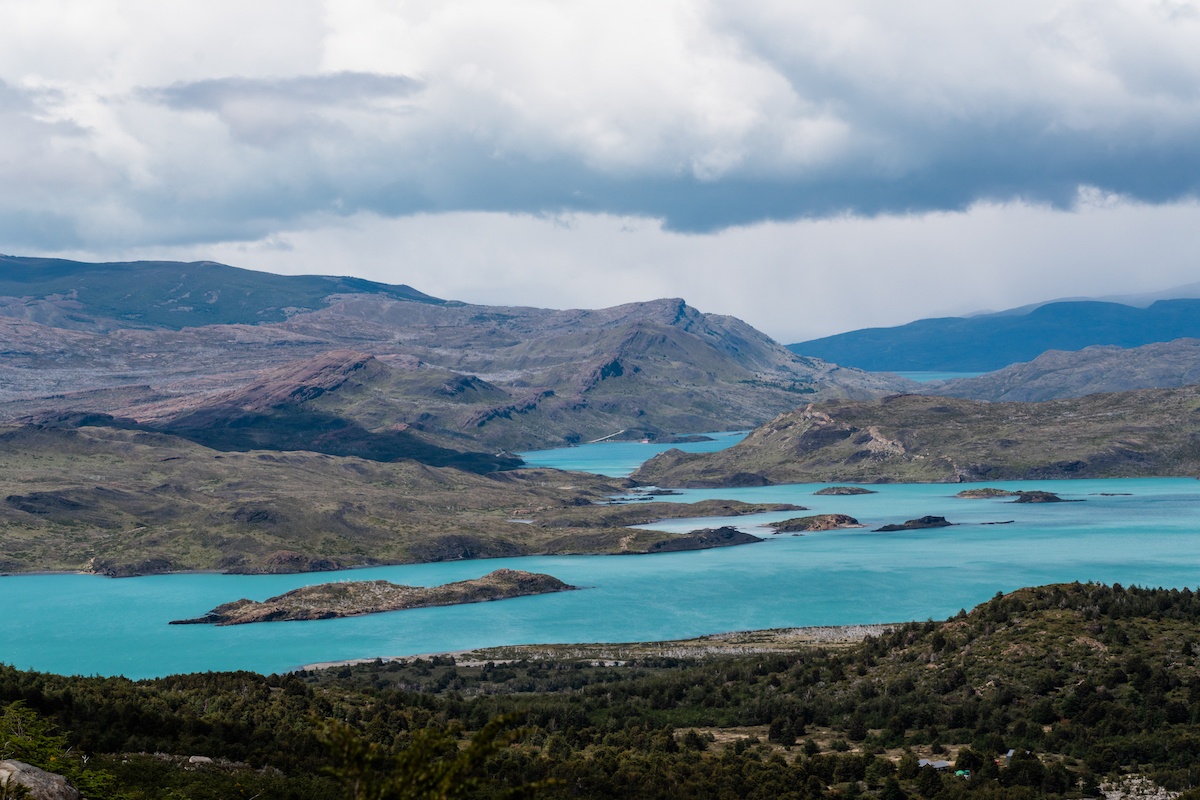
The scenery is stunning, the logistics and conditions are challenging, and your body is pushed to exhaustion with very little rest time.
Not only will you learn how capable your mind and body really are, but there’s the added bonus of not feeling guilty at all when indulging in a slice of chocolate cake and glass of Carmenere at a refugio at the end of each day. Because my god will you ever burn a lot of calories.
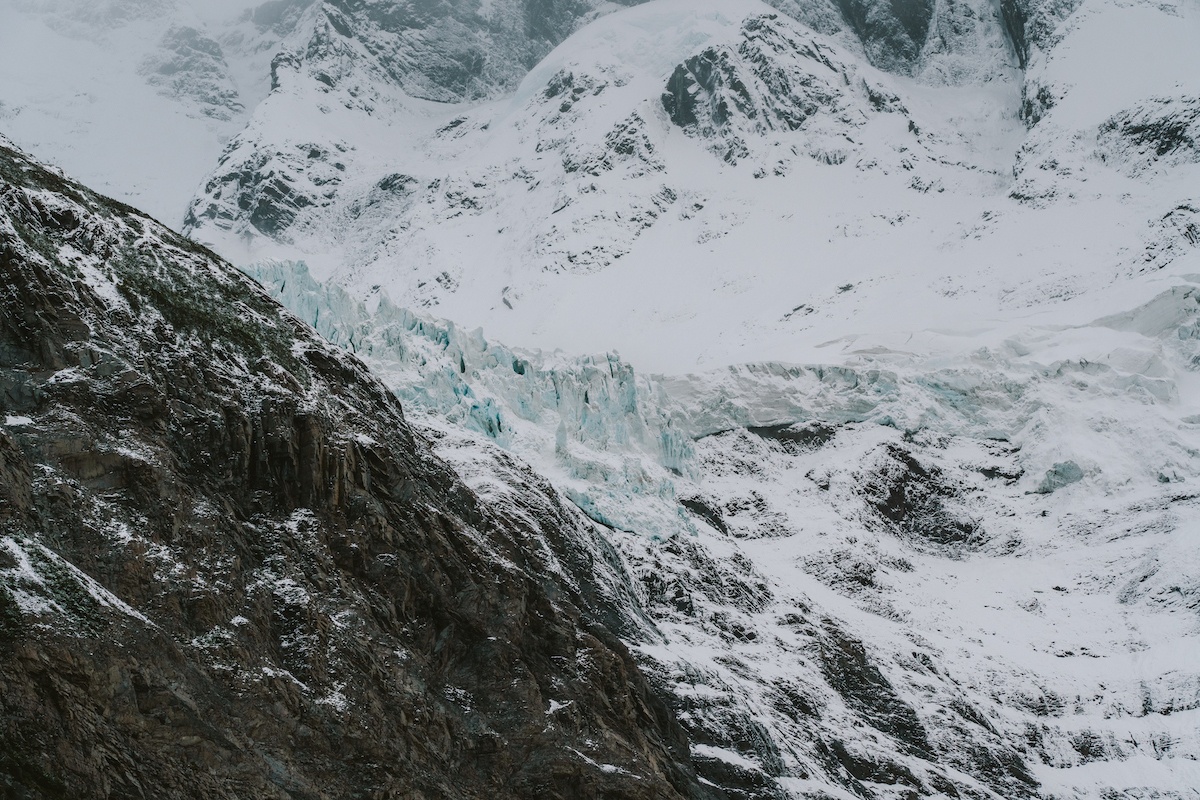
Is this trip for everyone? No.
Is it epic and unforgettable? Absolutely.
Here’s everything you need to know if you’re thinking about tackling the Torres del Paine W Trek in Chile.
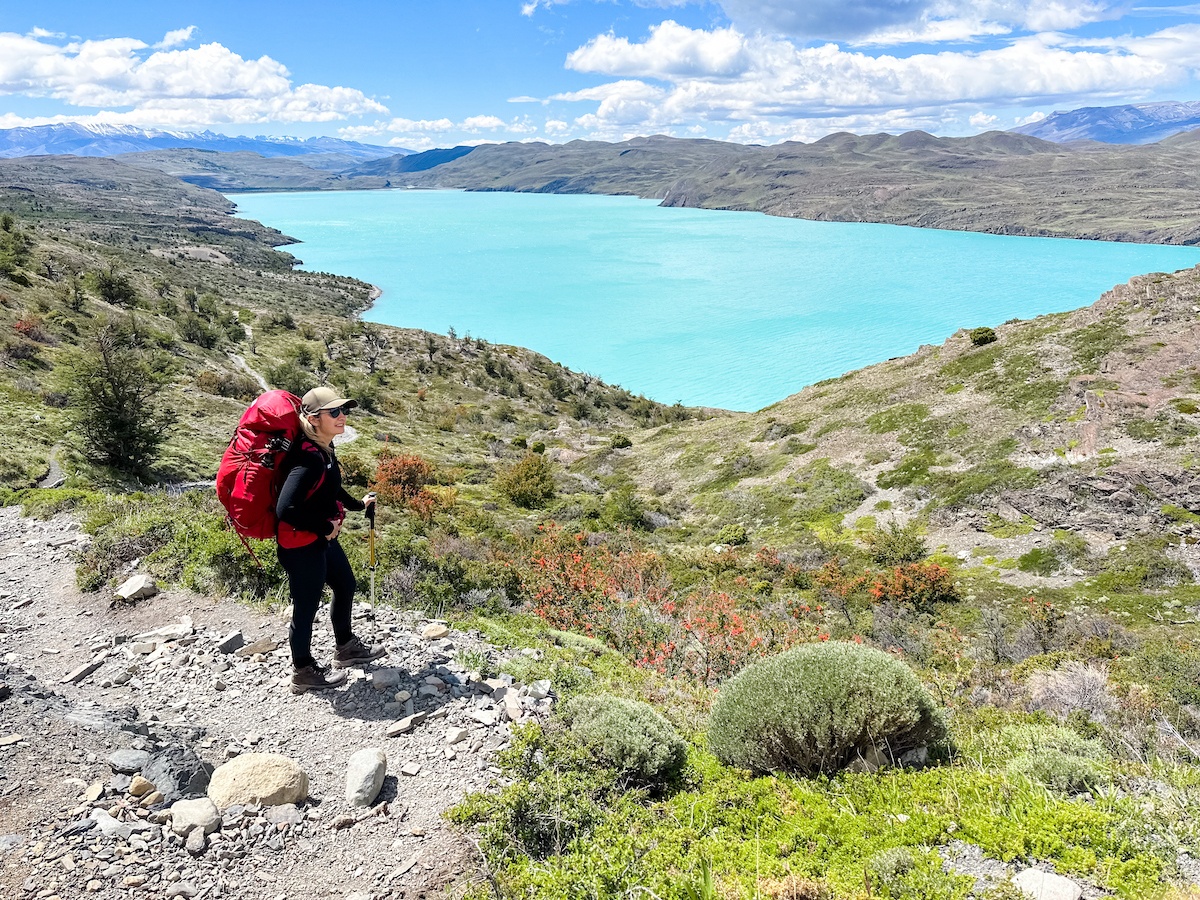
The Patagonia W Trek route
The W Trek takes four days to complete, and while its exact length seems to change depending on who you ask or which map you look at, the general consensus is that the trail is about 64 kilometers (40 miles) long.
Expect anywhere from six to 12 hours of hiking each day, more than 100,000 steps (my Apple Watch logged 125,458 to be exact) and of course countless photo-ops.
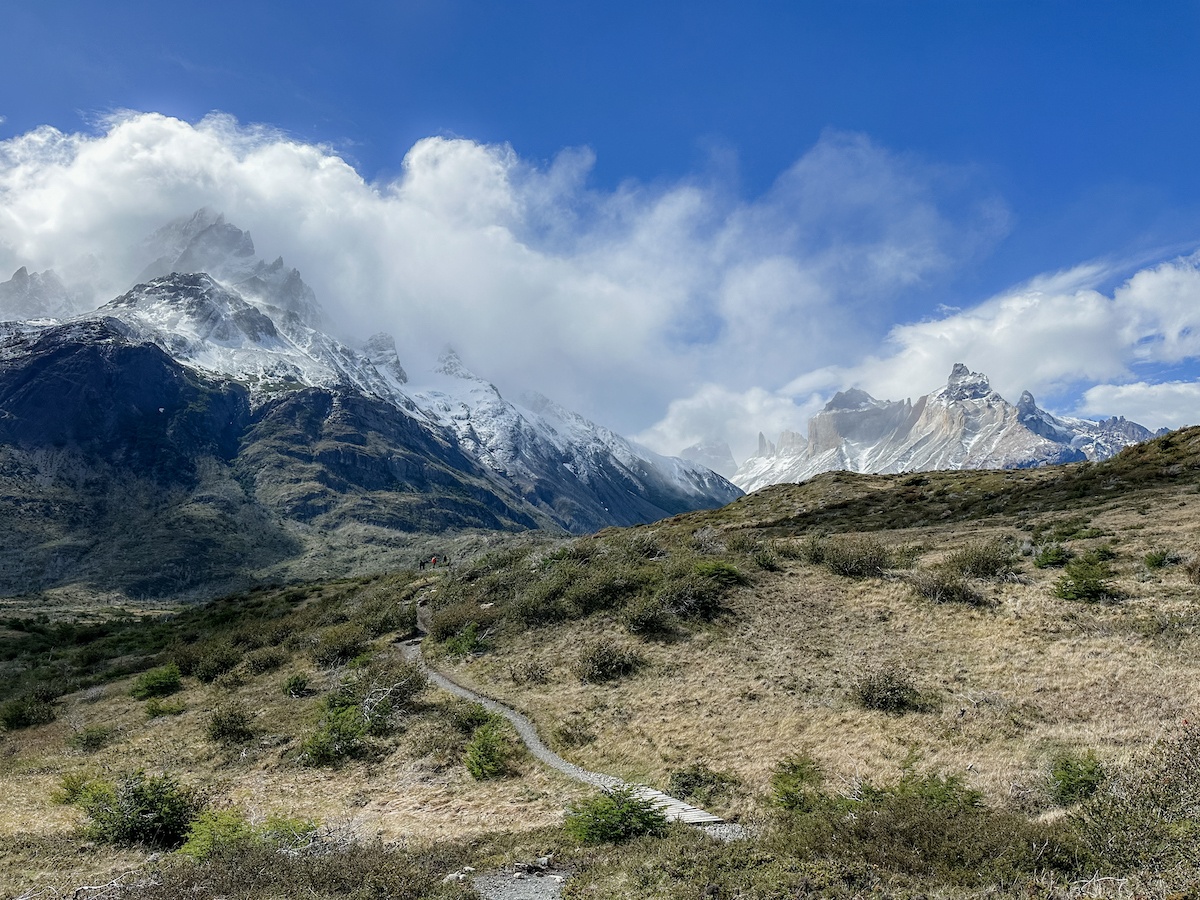
This is the most popular way to hike Patagonia, and those who are up for even more of a challenge can continue along the O Circuit which takes about nine days to complete the 122 kilometer, counter-clockwise loop.
This W Trek map outlines the exact route:
The W Trek in Torres del Paine can be done in either direction, starting from either the Torres del Paine Welcome Center on the east side or Lago Grey on the west which requires a boat ride over.
Deciding which side to start from simply comes down to preference and logistics, with the availability of refugios (the campsites that hikers stay at each night) being the most important to account for.
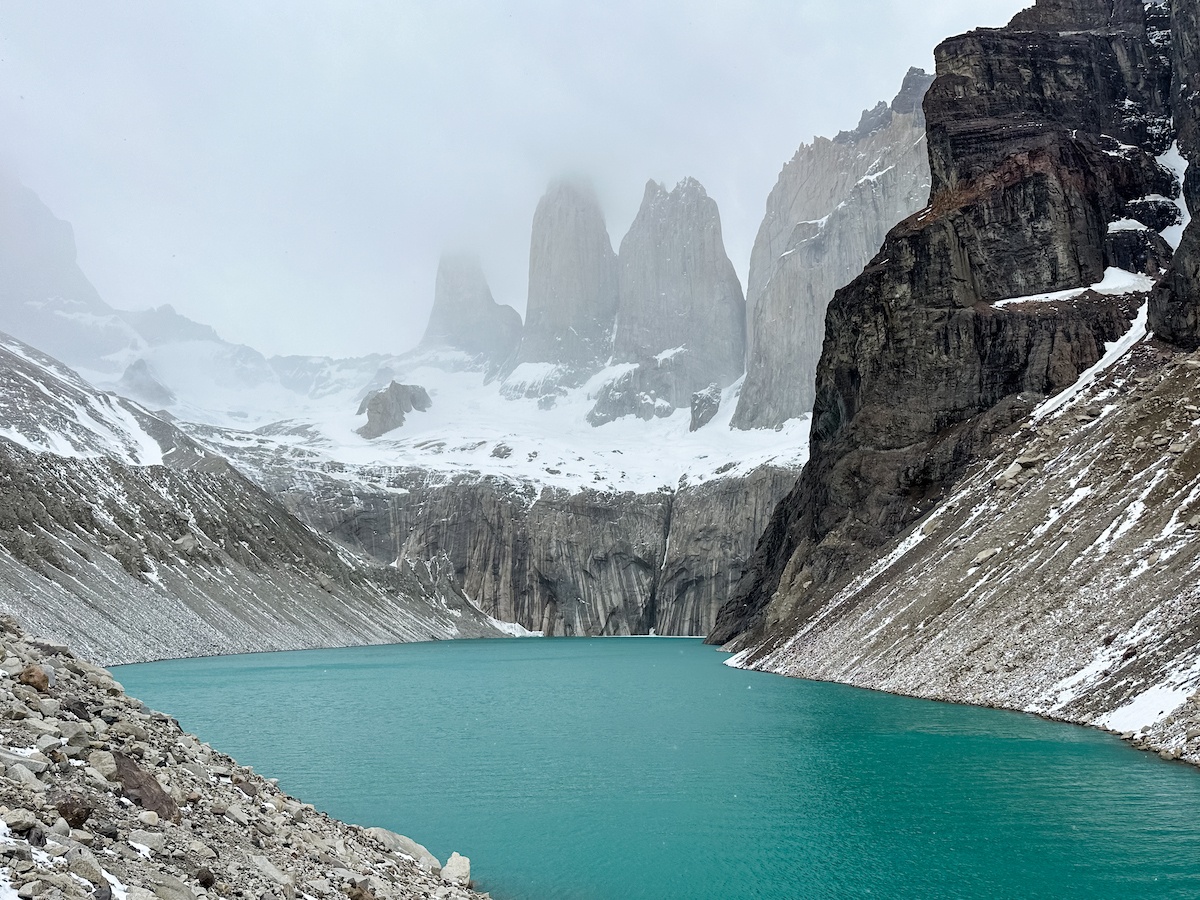
Another factor is when you want to take on the Mirador Base de Las Torres hike: this is the view you’ll see on pretty much every single postcard and basically the entire reason most people come all the way to Patagonia.
Thing is, it’s a very steep eight hour round trip hike, and the most challenging day of the W Circuit. So, some like to get it out of the way on day one while their legs are fresh, while others opt to start from the other side and save it for the last day of the hike as a culmination of their efforts.
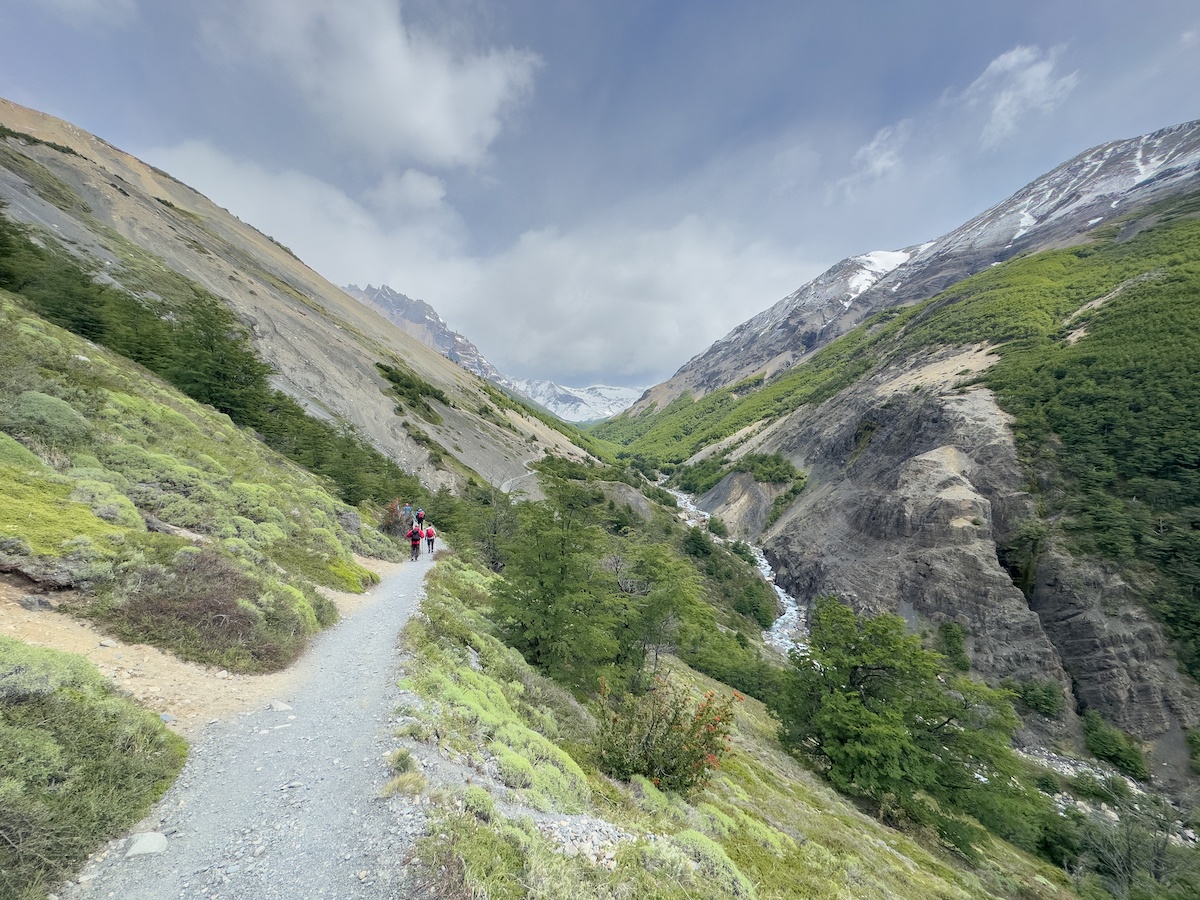
We did it on the first day, and there are pros and cons to both. I can’t imagine how much harder it would have been after already hiking for three full days and feeling worn down from camping and cold showers; that said, going full throttle on the first day wasn’t the best warmup as someone who doesn’t do intense hikes on a regular basis, and my legs were basically jelly the whole rest of the trip.
One perk of going from west to east is you can stay at Refugio Chileno the night before summiting Mirador Las Torres. That saves about 90 minutes of hiking compared to starting from Centro on the other side–a huge advantage for those wanting to make it up for sunrise or try and beat the crowds.
When I asked my guide who’s done the trek hundreds of times which direction he prefers, he said he likes to do it on day one to get it over with. So there you have it.
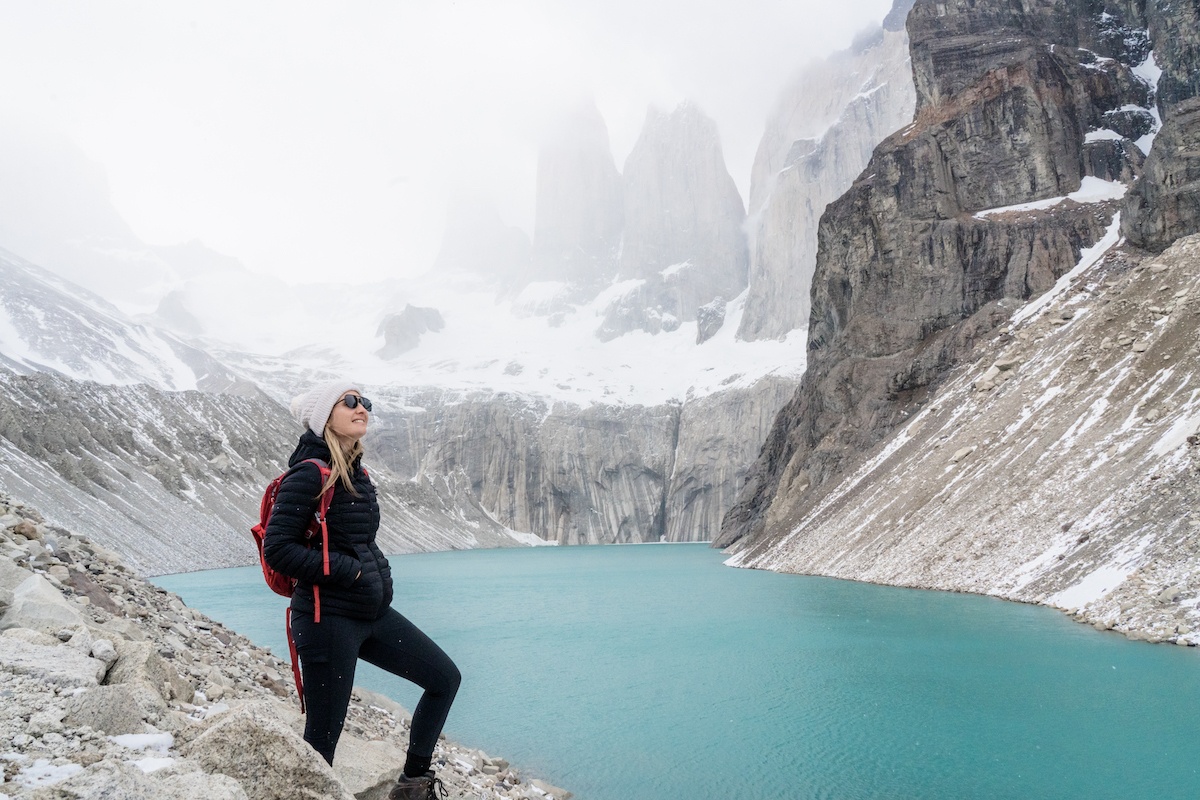
How to book a W Trek itinerary
As you might have noticed already, there are a stupid amount of logistics involved with trekking in Torres del Paine–and in true Chilean fashion, they don’t make it easy.
Some of the things you’ll need to book and consider are:
- Transportation to and from the park gates and to/from the welcome centre (yup, these are separate buses)
- Refugios for each night of the trek
- Food (either carry your own or book meals at each stop)
- Sleeping bag and mat rentals (if not carrying your own)
- Permits/entrance fees
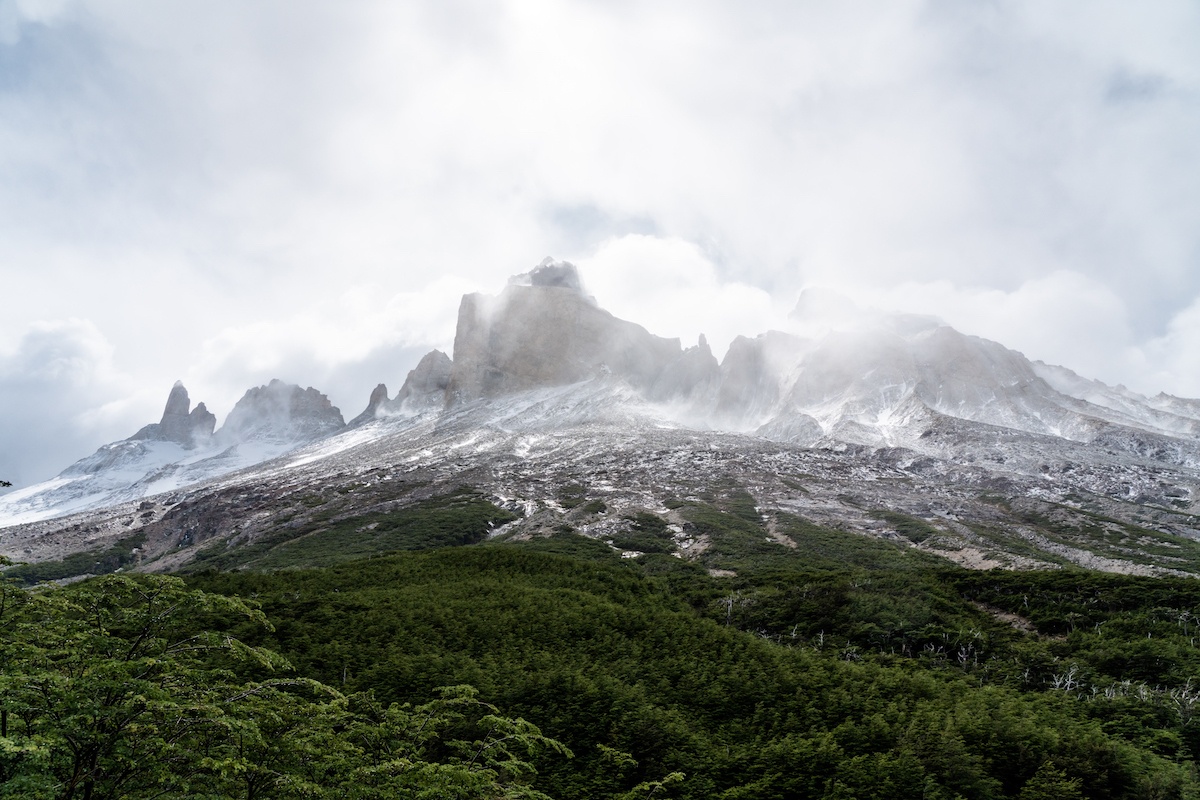 The most important thing to know is that refugio bookings can get snapped up instantly when bookings for the next season open at the beginning of May. Truly, it makes getting Taylor Swift concert tickets look easy.
The most important thing to know is that refugio bookings can get snapped up instantly when bookings for the next season open at the beginning of May. Truly, it makes getting Taylor Swift concert tickets look easy.
The problem is that tour operators secure a lot of the spots ahead of time, so there are a limited amount left for those planning self-guided trips. You’ll also have to ensure you book each night you need in the correct order of the route, and since two different companies (Vertice and Fantástico Sur) operate the refugios you’ll need to coordinate this on separate websites.
Fun, right?
Globe Guide tip: Some hikers have had success contacting the companies directly via e-mail or WhatsApp in advance to secure bookings.
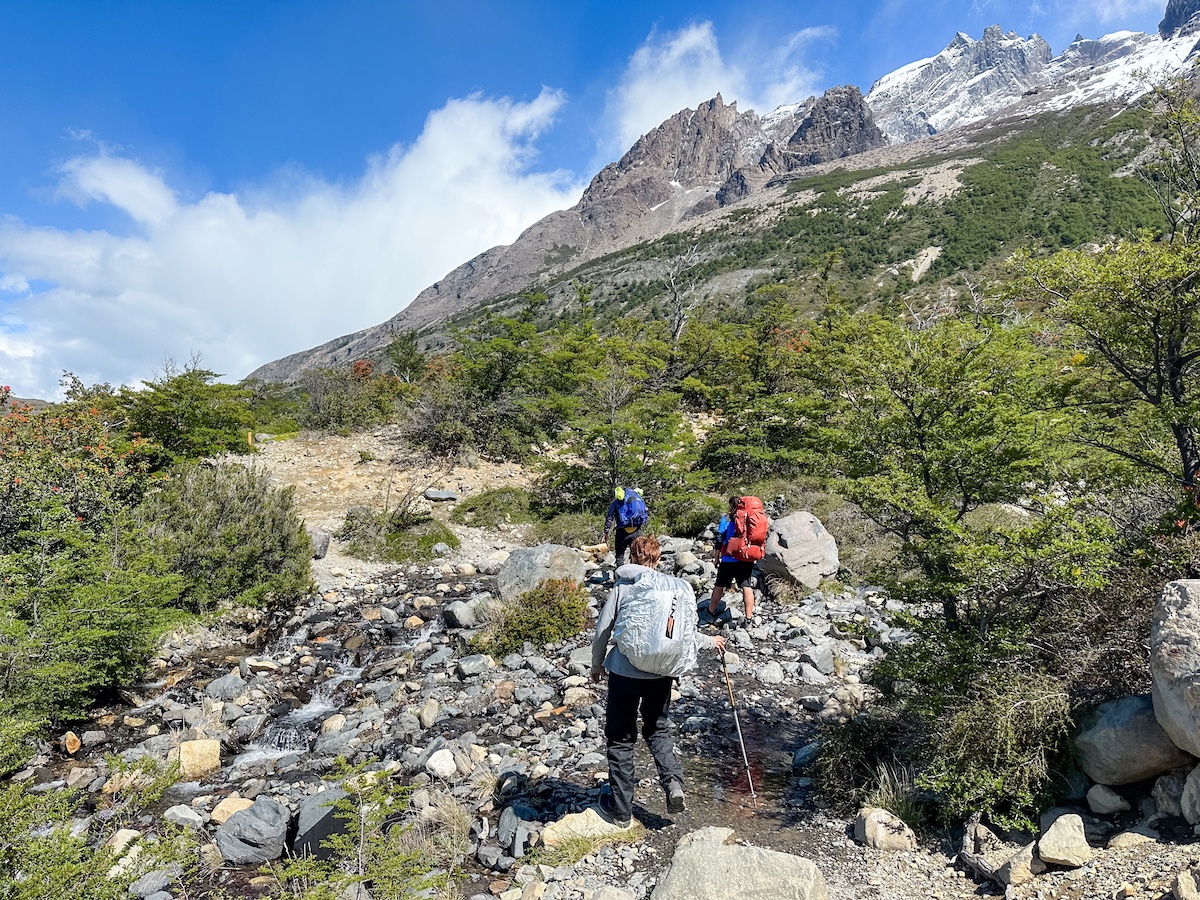
My recommendation: save yourself a lot of time and stress, and book through a small group tour operator instead.
I went with Traverse Journeys, which offers both self-guided and group trip options, as well as (optional) stops in the Strait of Magellan to see the famous penguins, horseback riding, wine tasting among the Casablanca vineyards and city sightseeing in Valparaiso and Santiago.
Traverse handles every single detail right down to what’s in your lunch bag, and donates a portion of the proceeds from each trip to support a local community partner. We saw this firsthand by learning about the efforts the Torres del Paine Legacy Fund is spearheading to conserve the fragile environment and ensure a safer experience for visitors, and even passed some of their volunteers working on the trail.
Globe Guide readers get $200 off of any booking with Traverse Journeys by entering code GLOBEGUIDE200 at checkout!
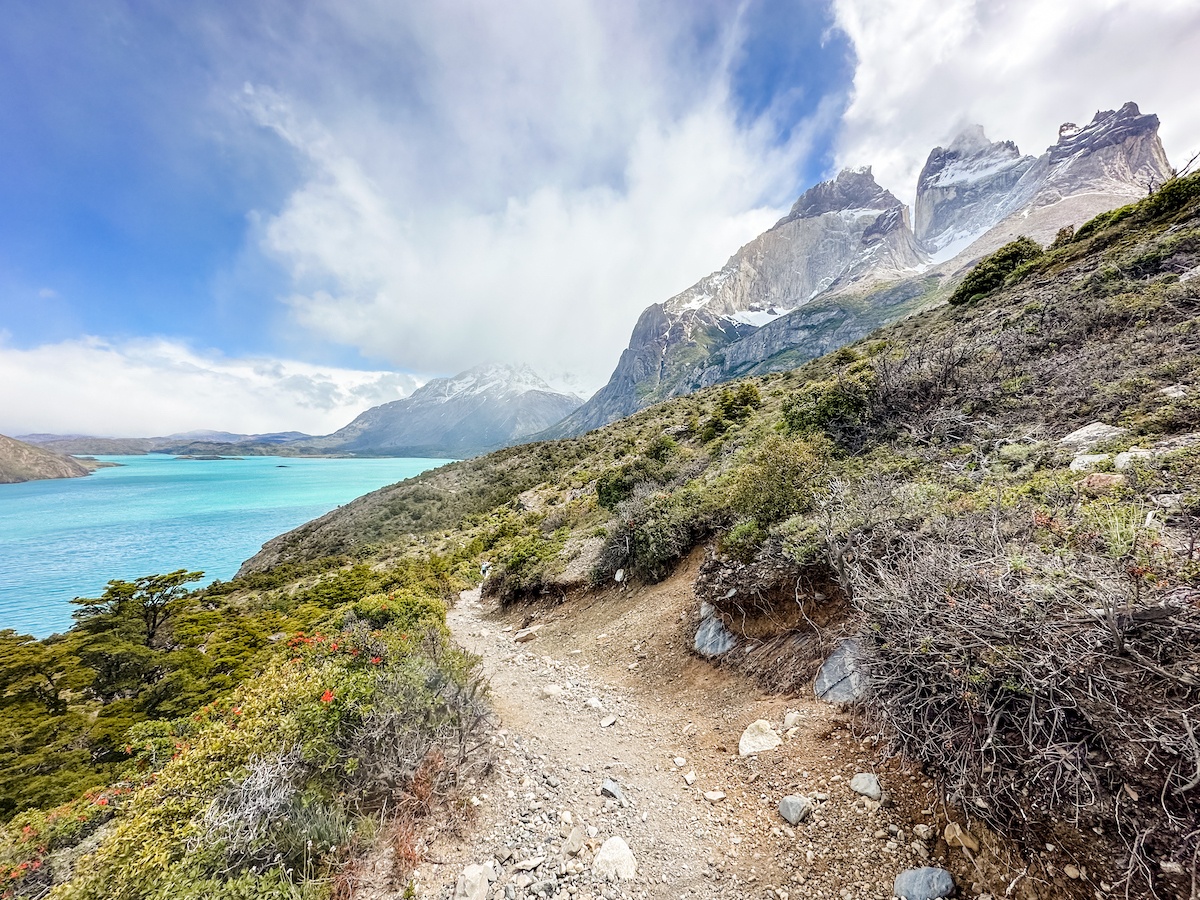
Getting to and from the entrances for trekking Torres del Paine National Park
The cute town of Puerto Natales is like basecamp for Torres del Paine National Park, despite being a scenic 90 minute drive away.
This is where the closest airport is, along with lots of great restaurants and accommodations, grocery stores for stocking up on food or snacks, and gear outfitters for any last minute purchases.
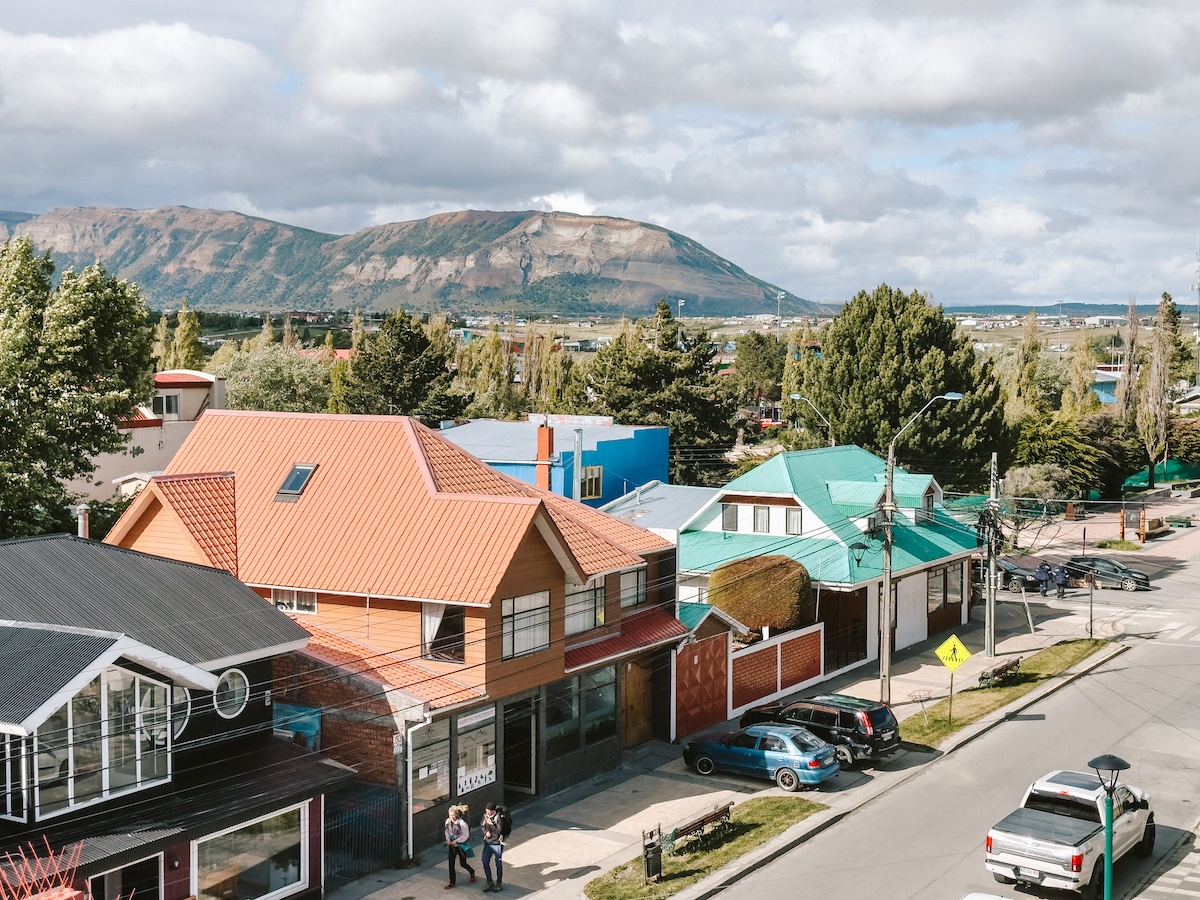
Buses depart from the main depot around 7 AM for both entrances to the park. If you’re starting on the east side like we did or doing the day hike up to Mirador Base Torres, you’ll present a QR code with your permit then hop on another bus (3,000 pesos) to get to the Torres del Paine Welcome Center.
Those starting from the west will head to Lago Grey and take a catamaran over. In theory this means all the way up to the glacier for incredible views, but if the weather is bad a ferry crosses Pehoe Lake to the Paine Grande refugio instead.
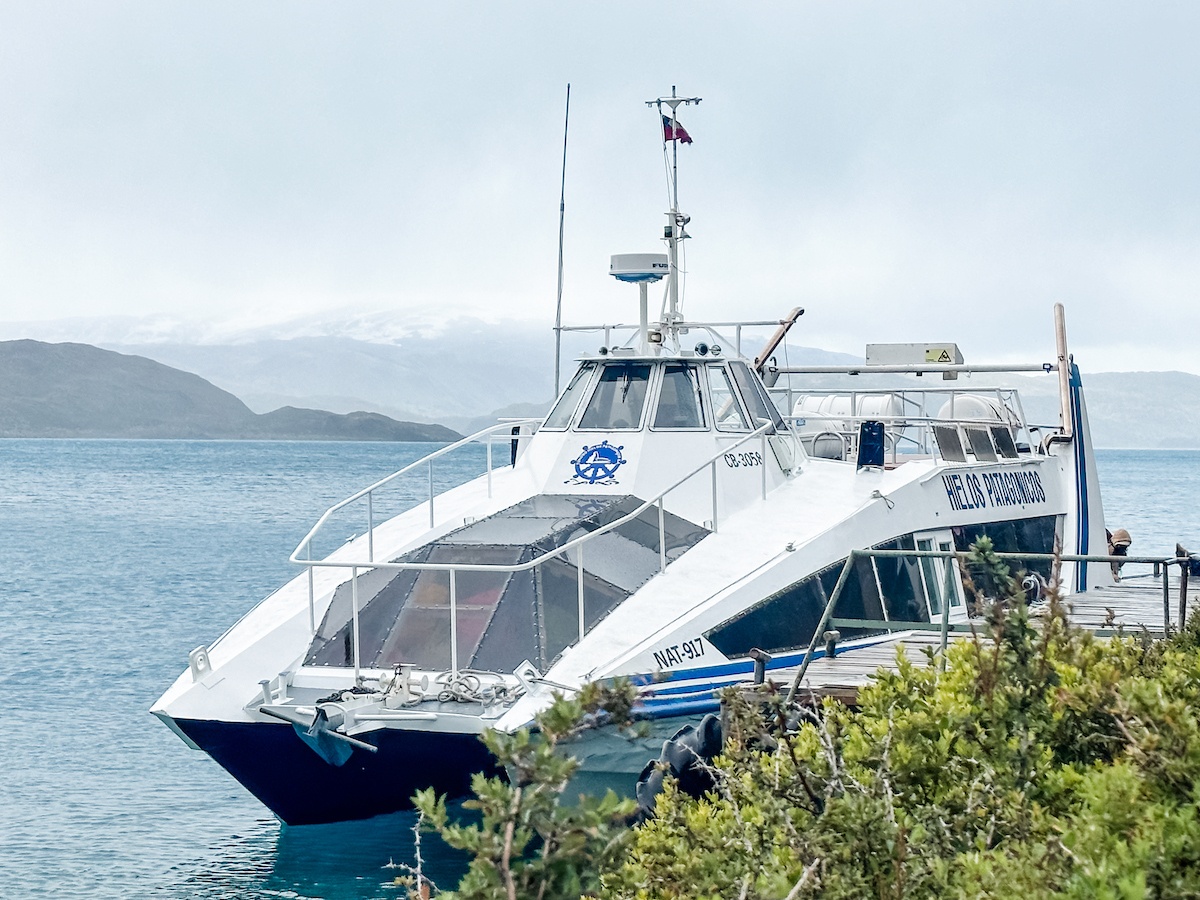
In this case, you’ll have to do an out-and-back to see the glacier on foot, before taking the ferry across Pehoe Lake. This website has more information on prices and schedules.
Globe Guide note: If neither of the boats are operating which happens on occasion due to weather or maintenance issues, it adds an extra 6-7 hours of walking to get to the pickup/dropoff spot.
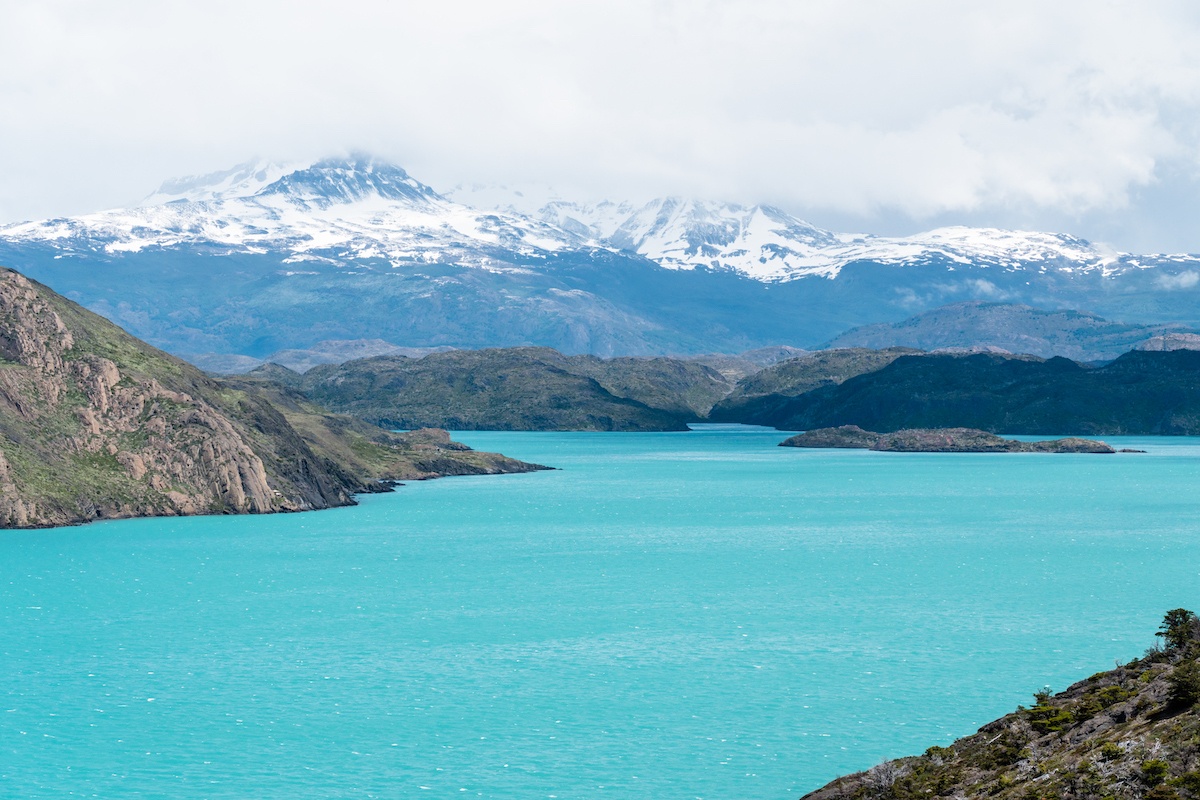
W Trek refugios
Refugios are a key part of the experience, and not all are created equally.
At the very least you can expect a communal eating area, shared bathrooms with (sometimes) warm sinks and showers, a canteen, bar and outdoor hangout area. Camping options are either elevated tents or tents on low platforms (both with sleeping pads), or sites for pitching your own tent.
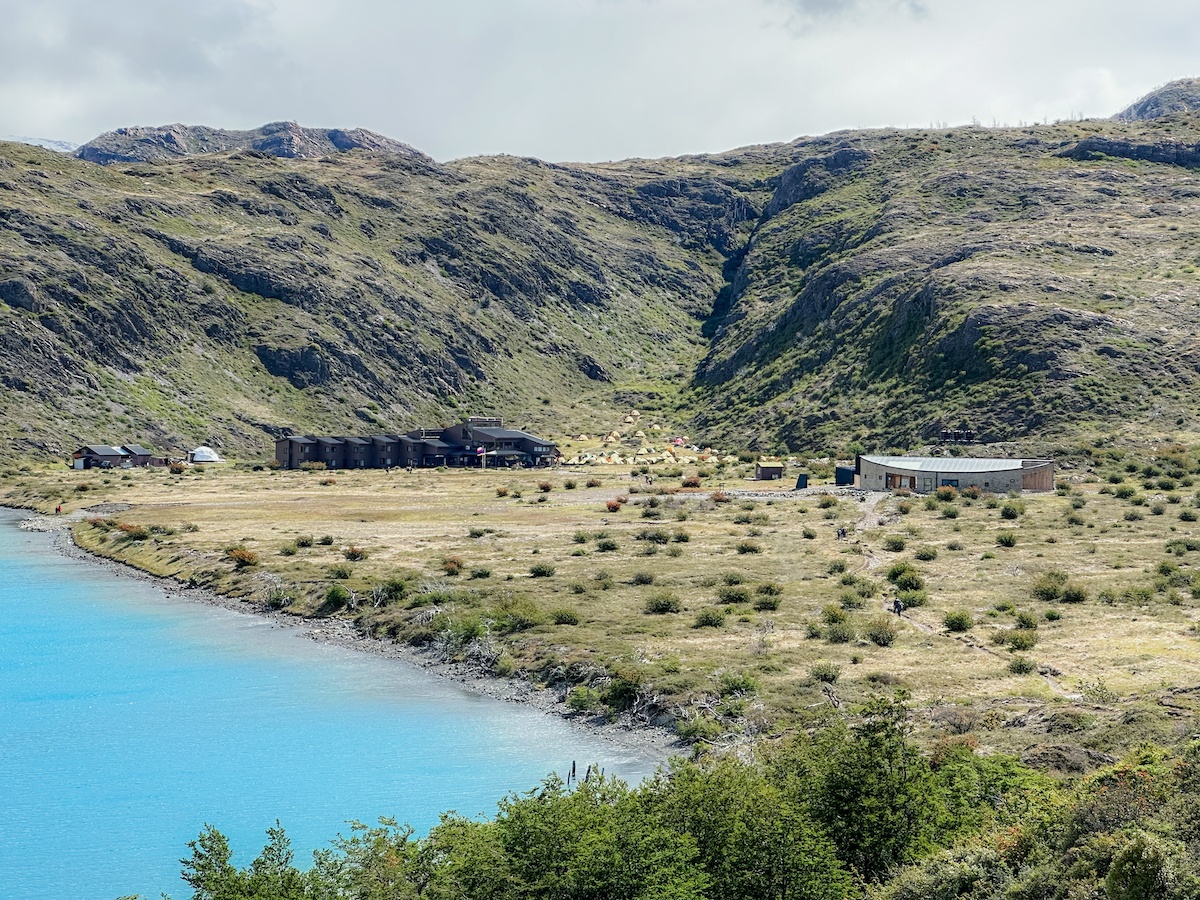
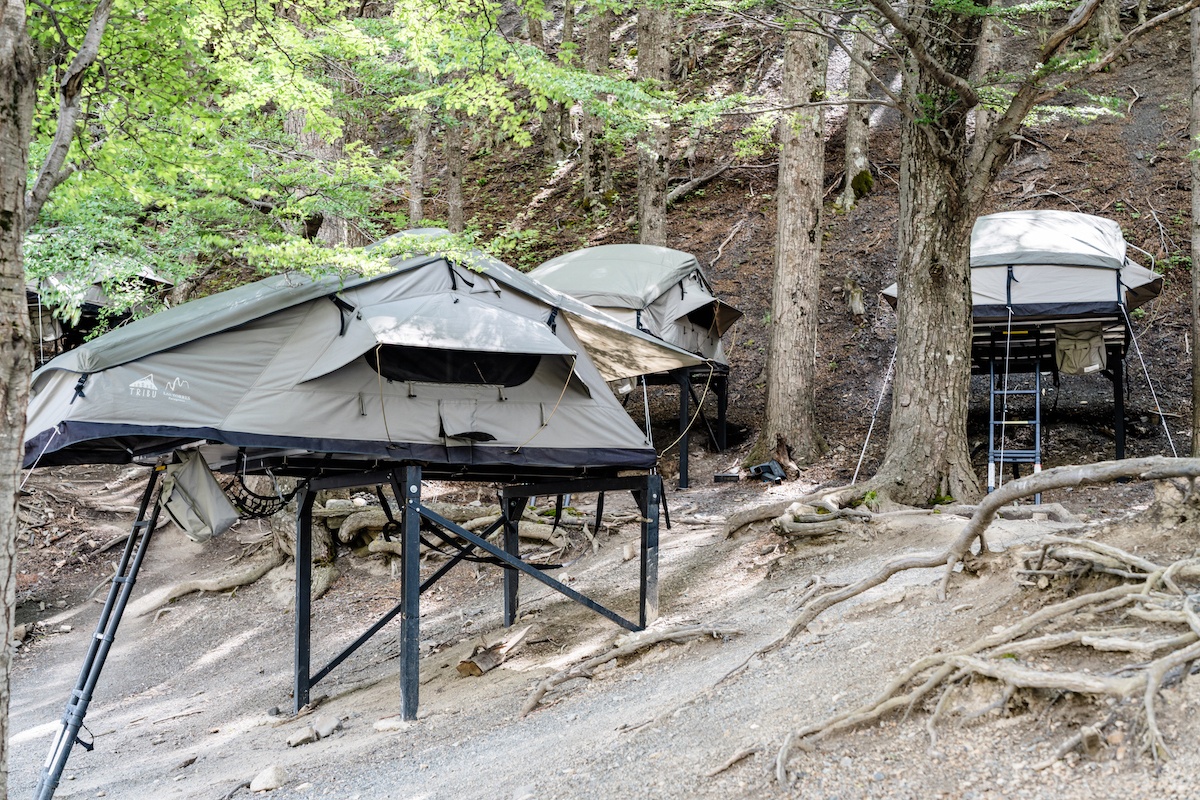
Some refugios also offer dorm-style rooms that sleep about six to eight people in bunk beds, private rooms for couples in the main lodge, and even unique accommodation options like domes and tiny houses.
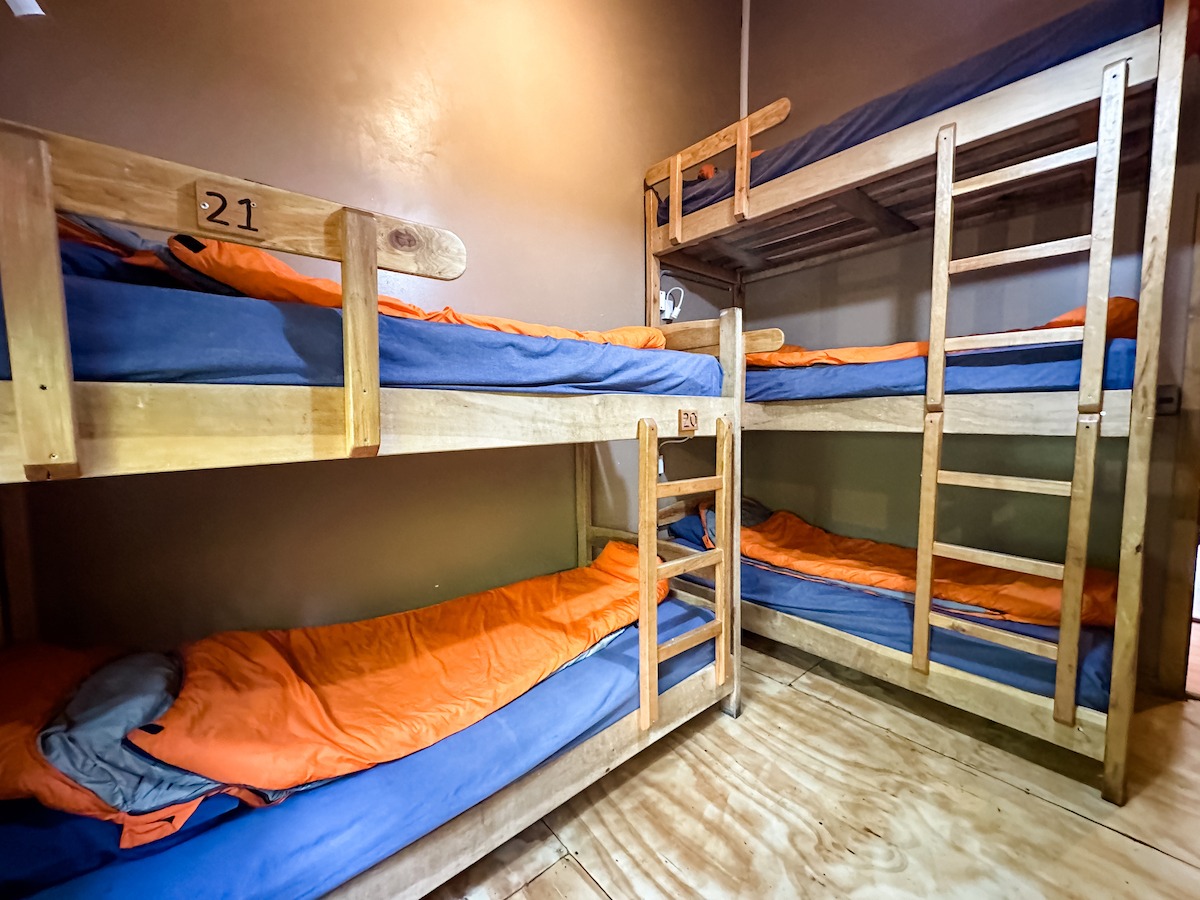
We didn’t get to stay at Refugio Los Cuernos, but absolutely loved the vibe of it from the short time we spent there on a lunch break. It has lovely views from the patio, a warm hangout space and some very cool accommodation options.
Paine Grande has a great feel with lots of communal spaces and a second-floor bar, and Centro has a cozy wood-stove fireplace and large dining area (though we didn’t love how far we had to trek to get to our tent–it felt like climbing another soggy mountain!).
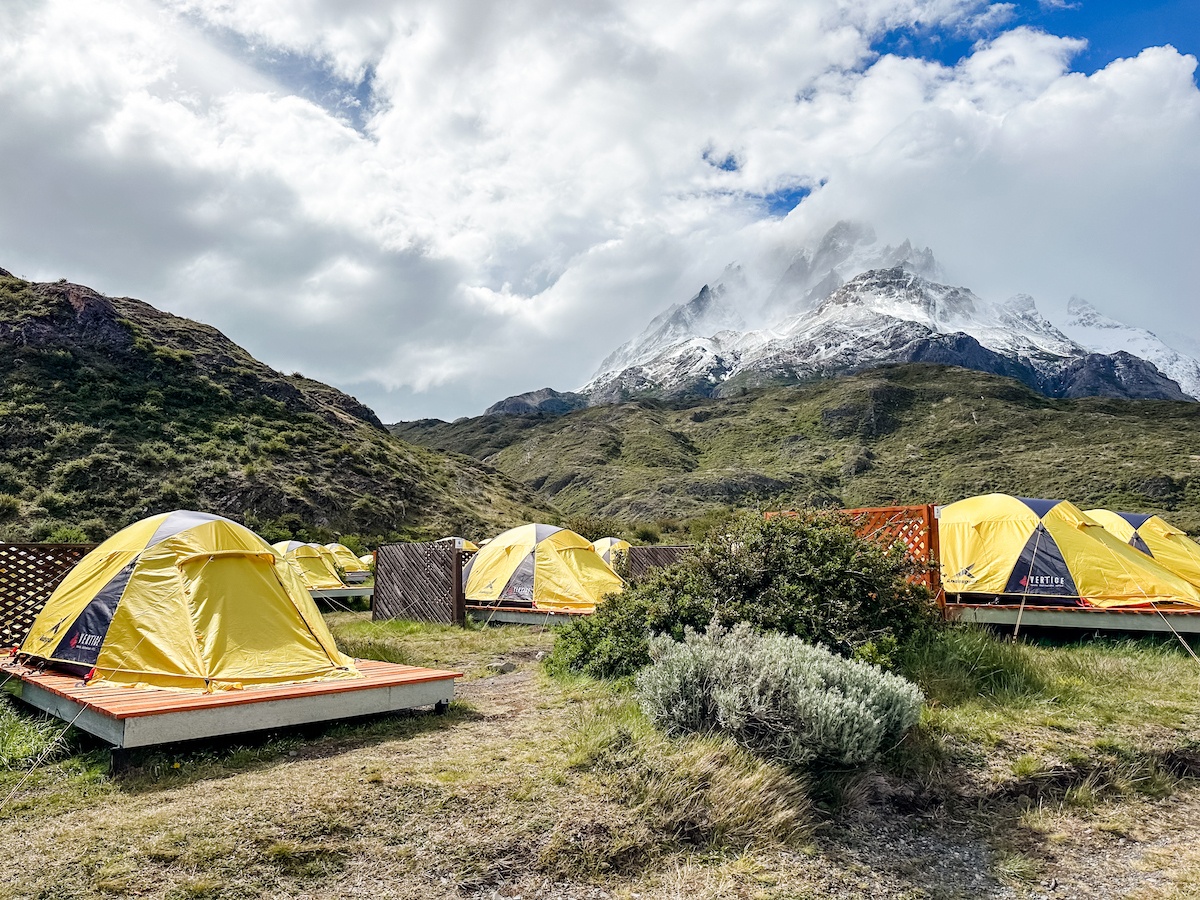
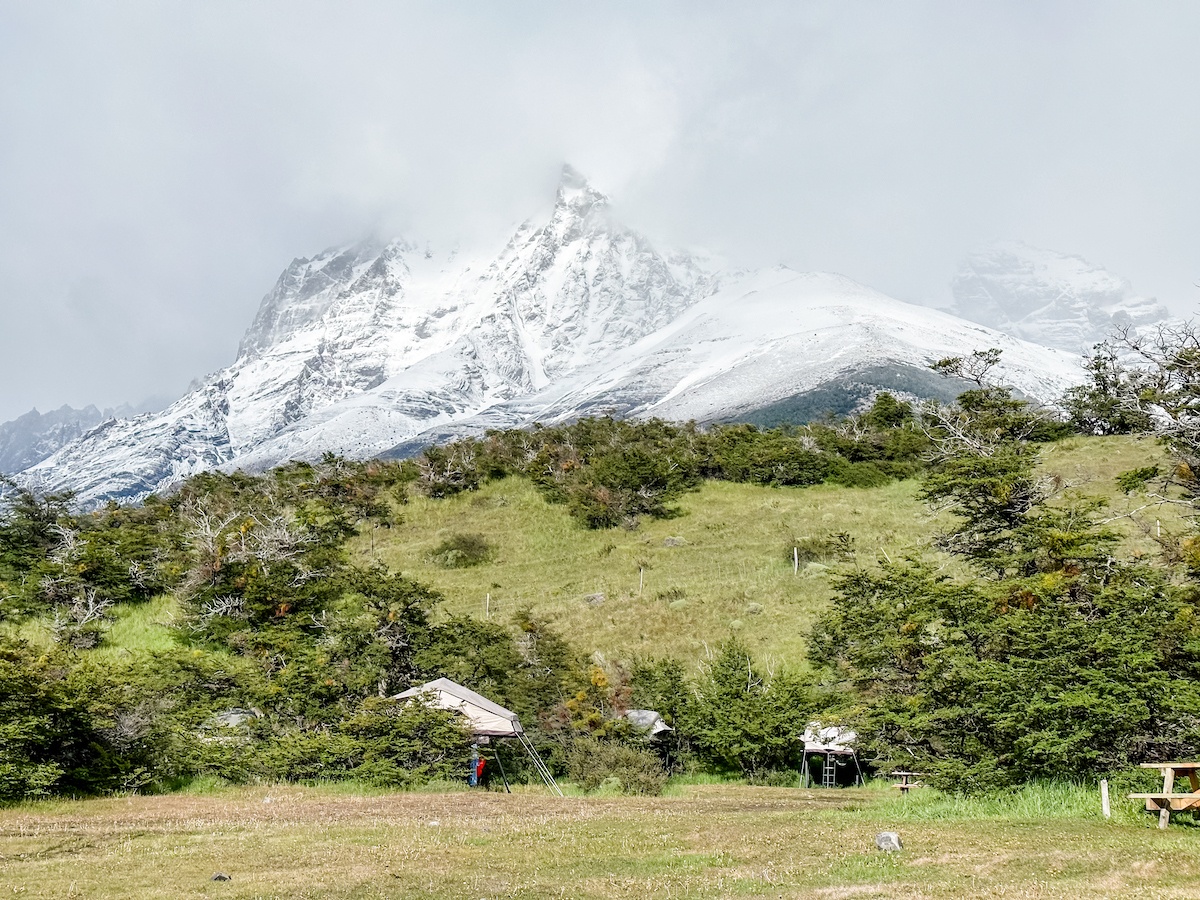
Frances was a total bust and we couldn’t wait to get out of there.
The layout is awful, with all the tents at the top of a hill and the restaurant at the very bottom and not well marked—not fun to deal with going up and down after a full day of hiking. To add insult to injury, dinner seatings start early and there’s no other warm place to sit or enjoy a drink, so you’re literally stuck out in the cold waiting to get in.
The bathrooms were filthy (to be fair, they aren’t very clean at most refugios) and even though there were limited hours for hot water it still ran out before the time was up. My top tip would be to stay at Los Cuernos instead of Frances if possible.
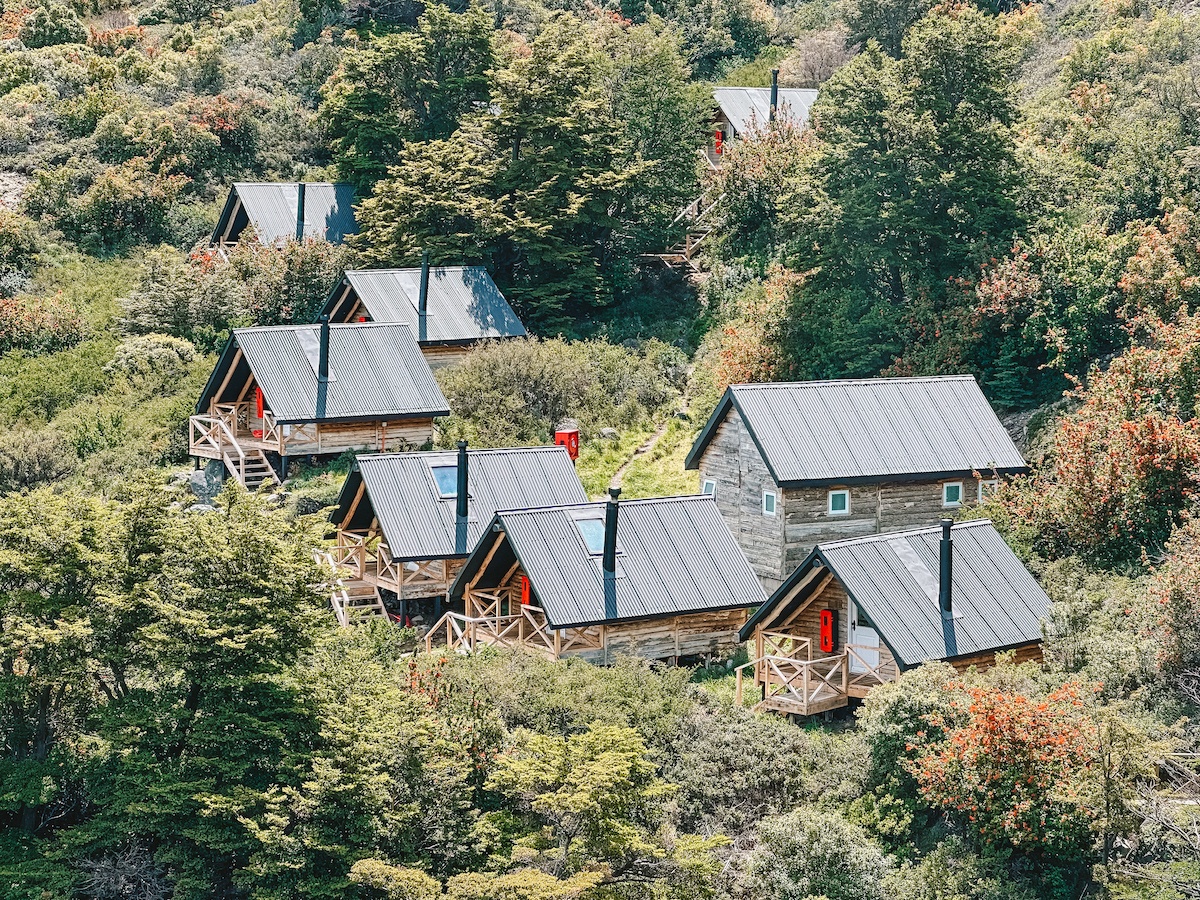
Prices differ by refugio, but expect to shell out about (per night, in USD):
- $13 for a campsite
- $40 for a tent
- $25 sleeping bag rental
- $12 mat rental
- $65 per bunk in bunk bed (comforter extra)
- $100+ for private accommodations like domes
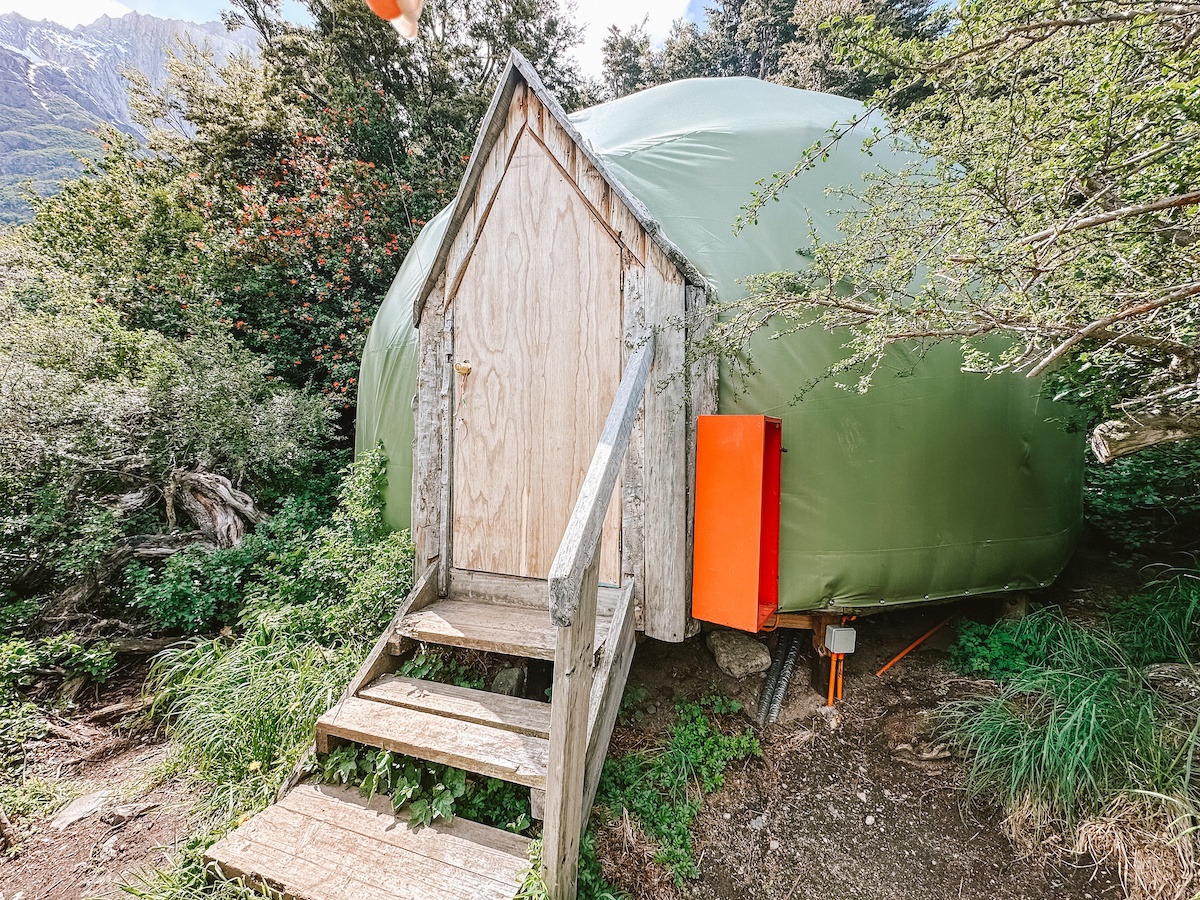
Hikers can bring their own food, or opt for a meal plan with breakfast (usually just bread and a small portion of scrambled eggs), boxed lunch and a hearty family-style dinner (timed seatings).
You’ll get a lot more out of the experience if you embrace being off-the-grid during the trek; however, those who need to connect can pay for minutes at the WiFi stations inside most refugios.
There are also outlets in the refugios for charging devices, but they can be in-demand so I recommend bringing a lightweight portable charger instead.
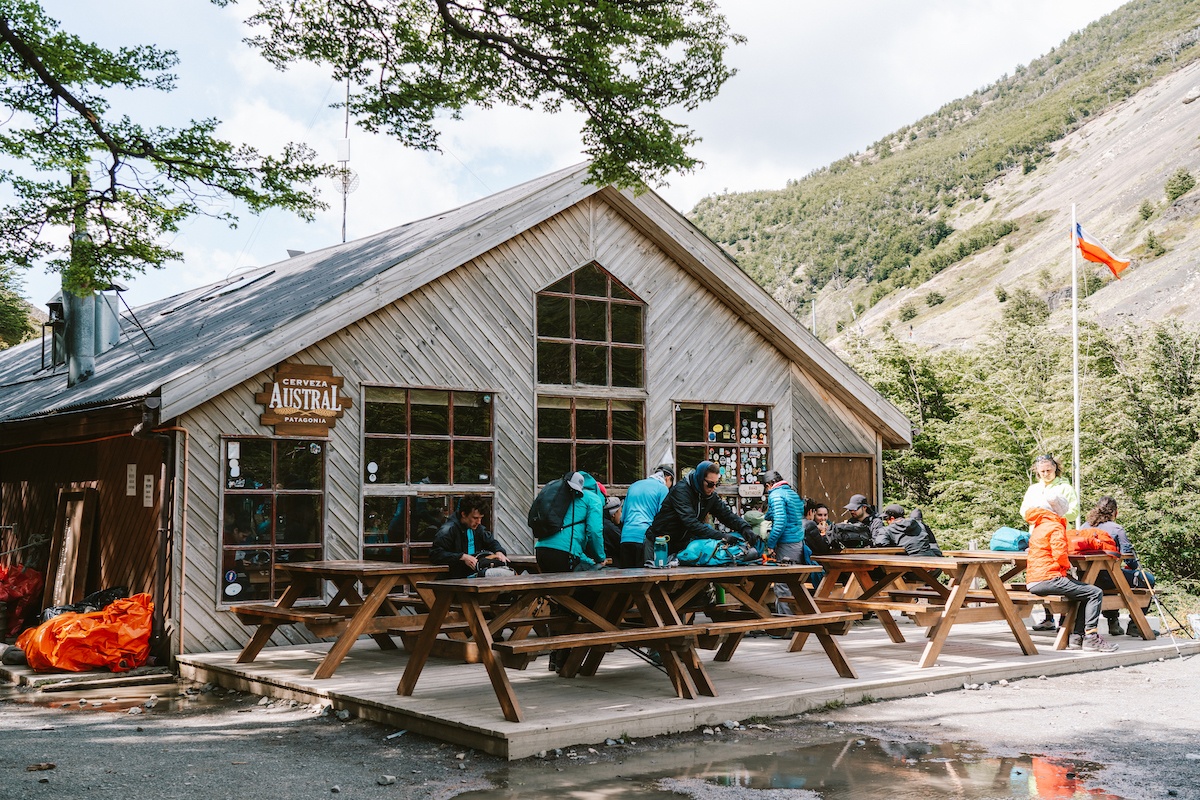
Life on the trail during the Torres del Paine W Trek
There’s a huge sense of camaraderie on the trails that feels like the good ol’ backpacking days. You’ll see the same people over and over, since there are only two potential routes and a handful of refugios.
You’ll spend anywhere from six to twelve hours walking per day (depending which part of the route you’re on), and likely only see a few dozen hikers until you get to a refugio.
The exception is the Mirador del Torres hike, which is absolutely packed with people. It sees about 1000 people per day since it’s the area’s most famous trail and can easily be done by day trippers from Puerto Natales.
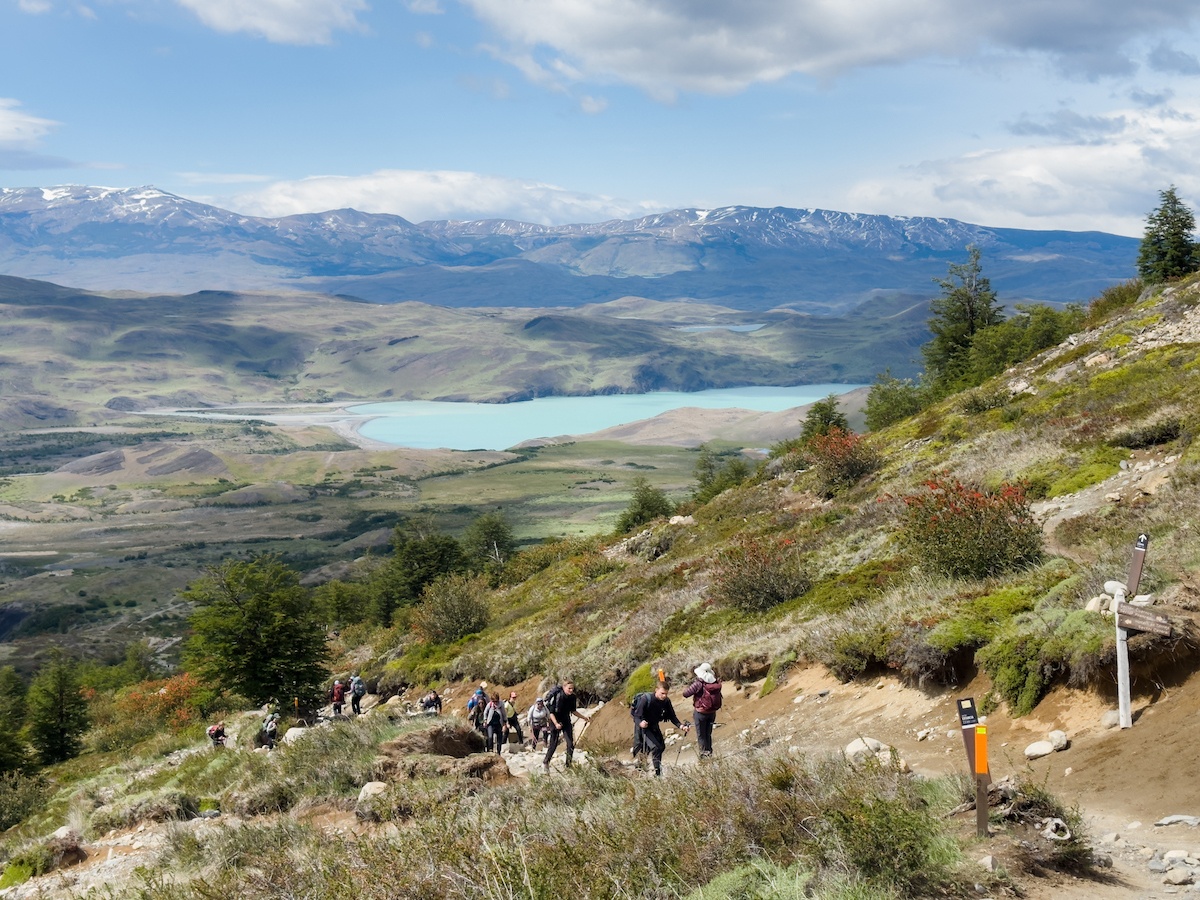
In terms of the age range, hikers seemed to be anywhere from in their early 20s to late 60s. My mom did it, and she’s turning 70 this year! I only saw one child the entire time, so the W Trek doesn’t seem to be popular with families.
It’s definitely a good idea to have hiking experience (and make sure you break in your shoes and test your outdoor gear ahead of time, obvs). That said, a couple people in our group aren’t regular hikers and managed alright, as it’s not a super technically challenging trail.
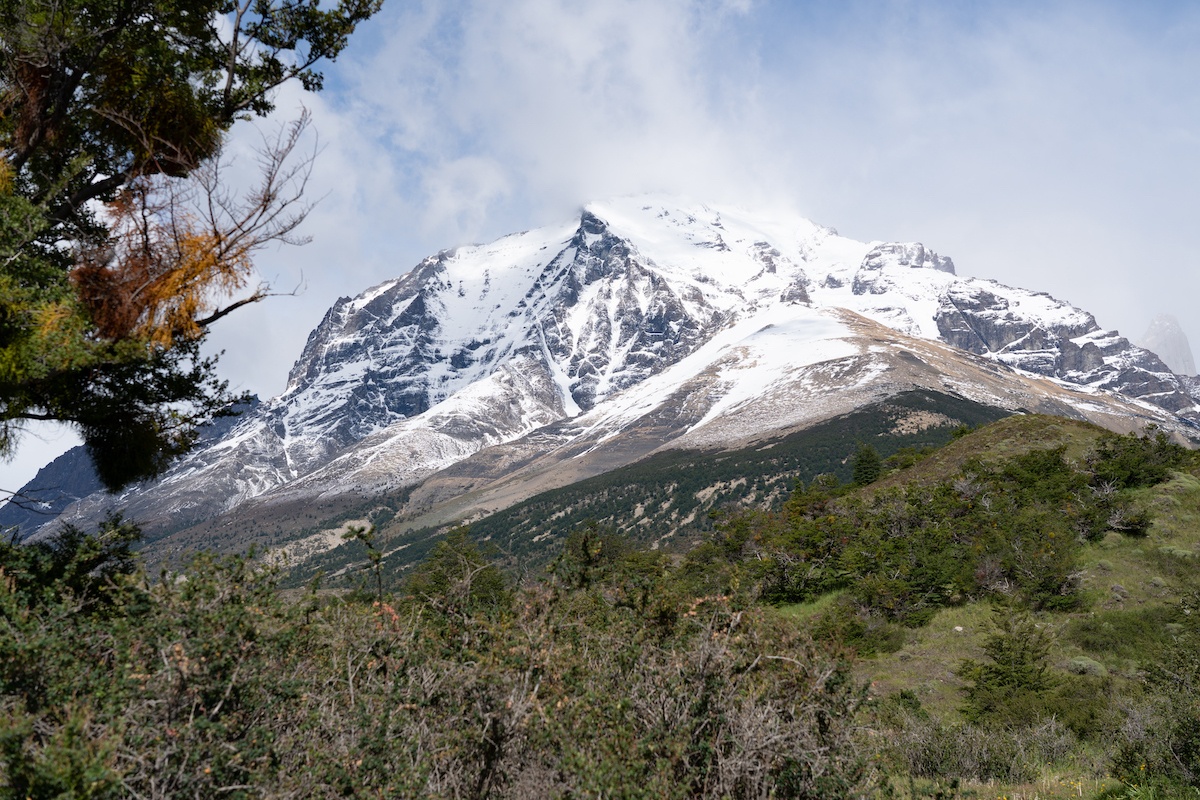
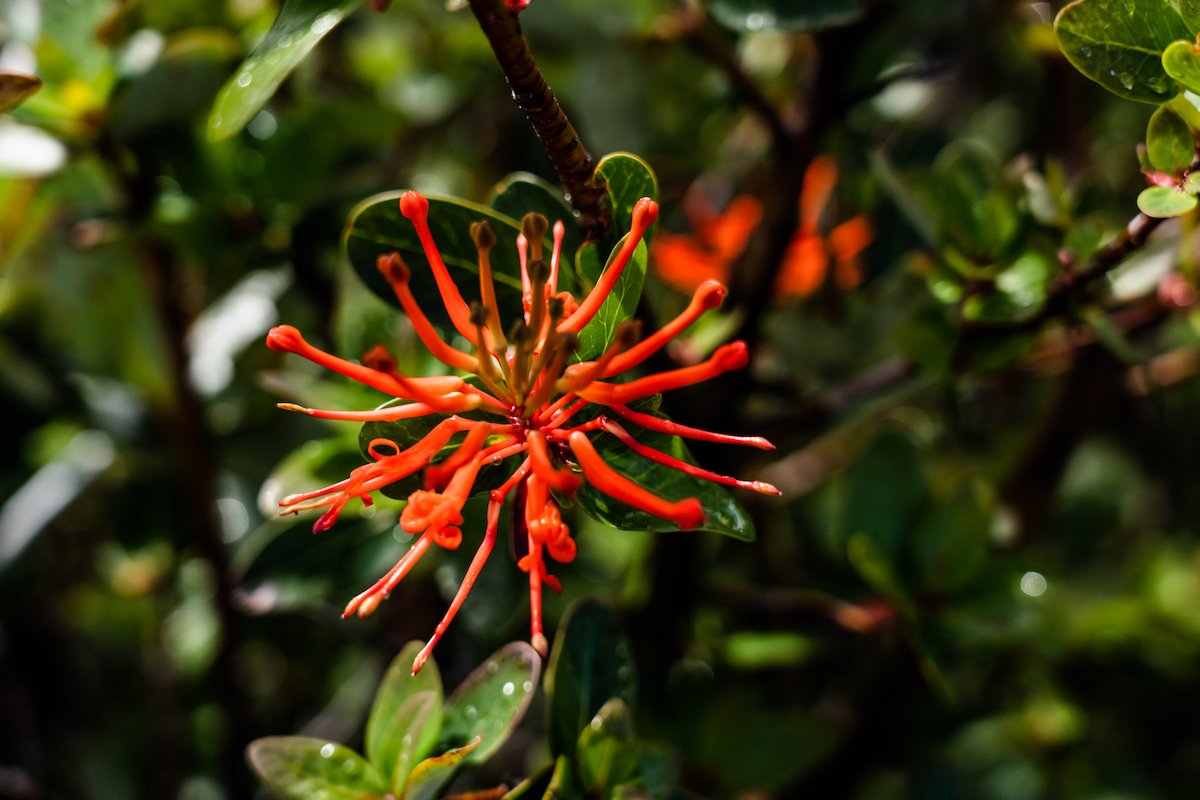
The main challenge for me was how long each day is, with very little time to rest before doing it all over again the next day. And let’s be honest, tents aren’t that comfortable. 10/10 would recommend upgrading to a bed if budget allows.
Completing the W Trek is definitely a mental and physical challenge–luckily, the feeling of accomplishment coupled with jaw-dropping scenery like soaring peaks shrouded in mist, calving glaciers and gem-toned lakes makes it all worth it.
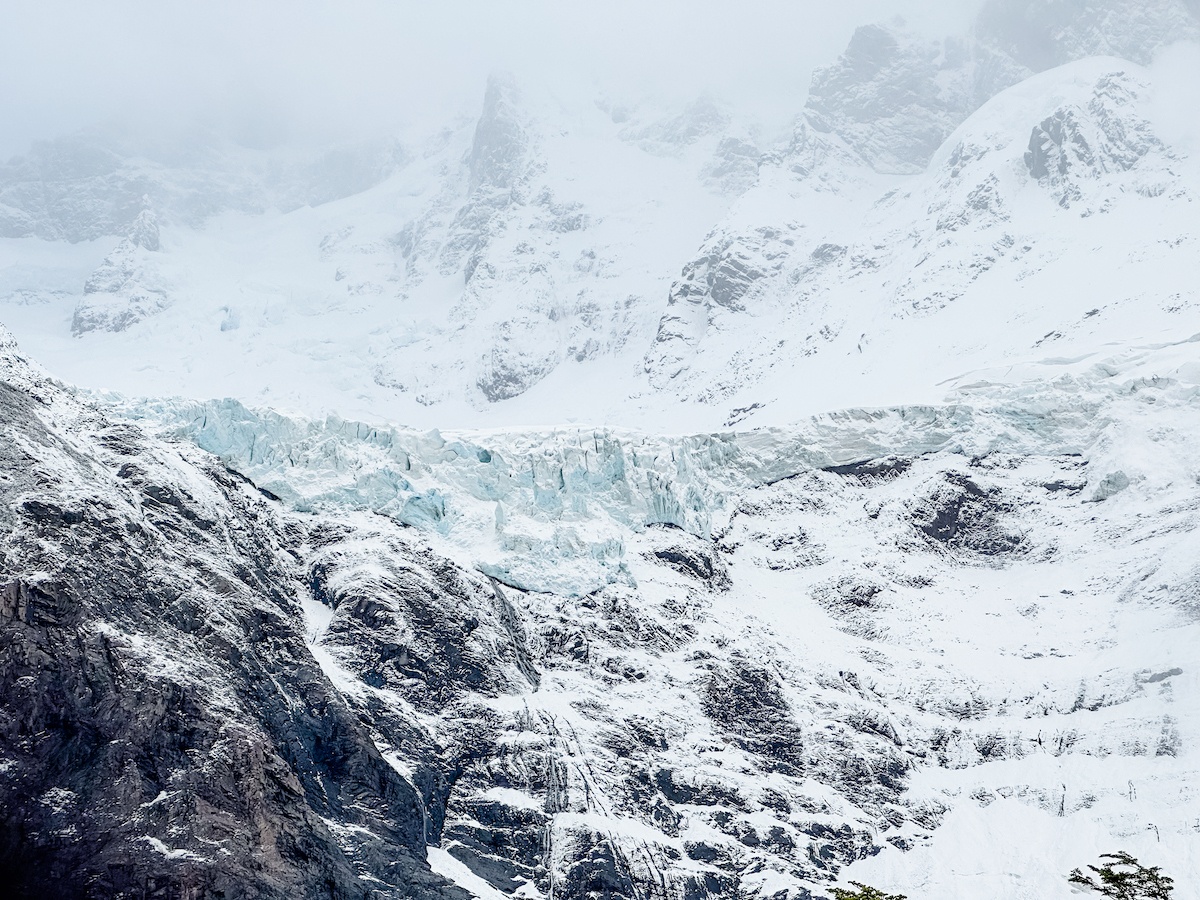
Patagonia packing list: The essentials
It’s not uncommon to experience all four seasons in a single hour in these parts, so preparation is key when planning your packing list for Patagonia.
Unless you hire a porter you’ll be carrying all of your belongings in a large trekking pack for at least two full days, and will also need to bring a lightweight sleeping bag, mat and travel pillow unless you rent them at each refugio.
READ MORE: Patagonia packing list for the Torres del Paine W Trek
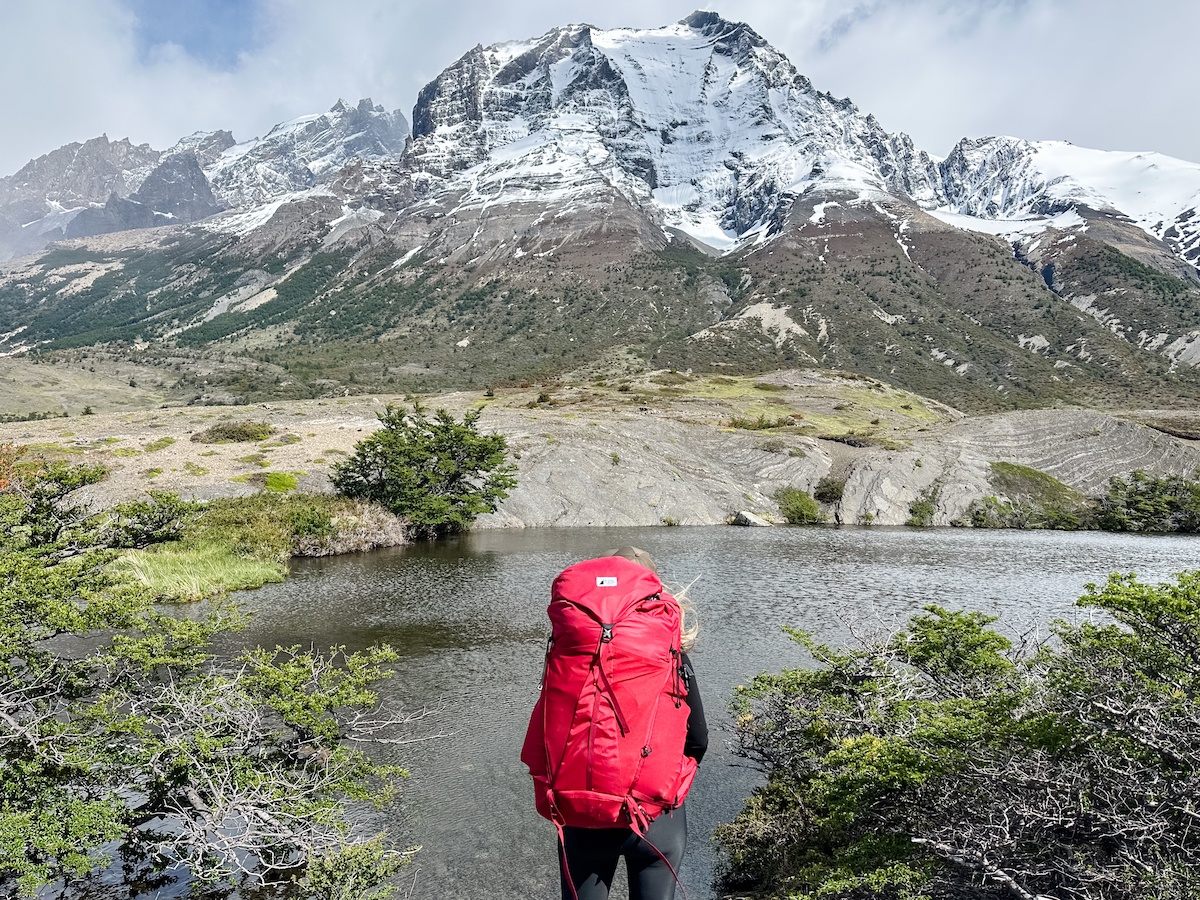
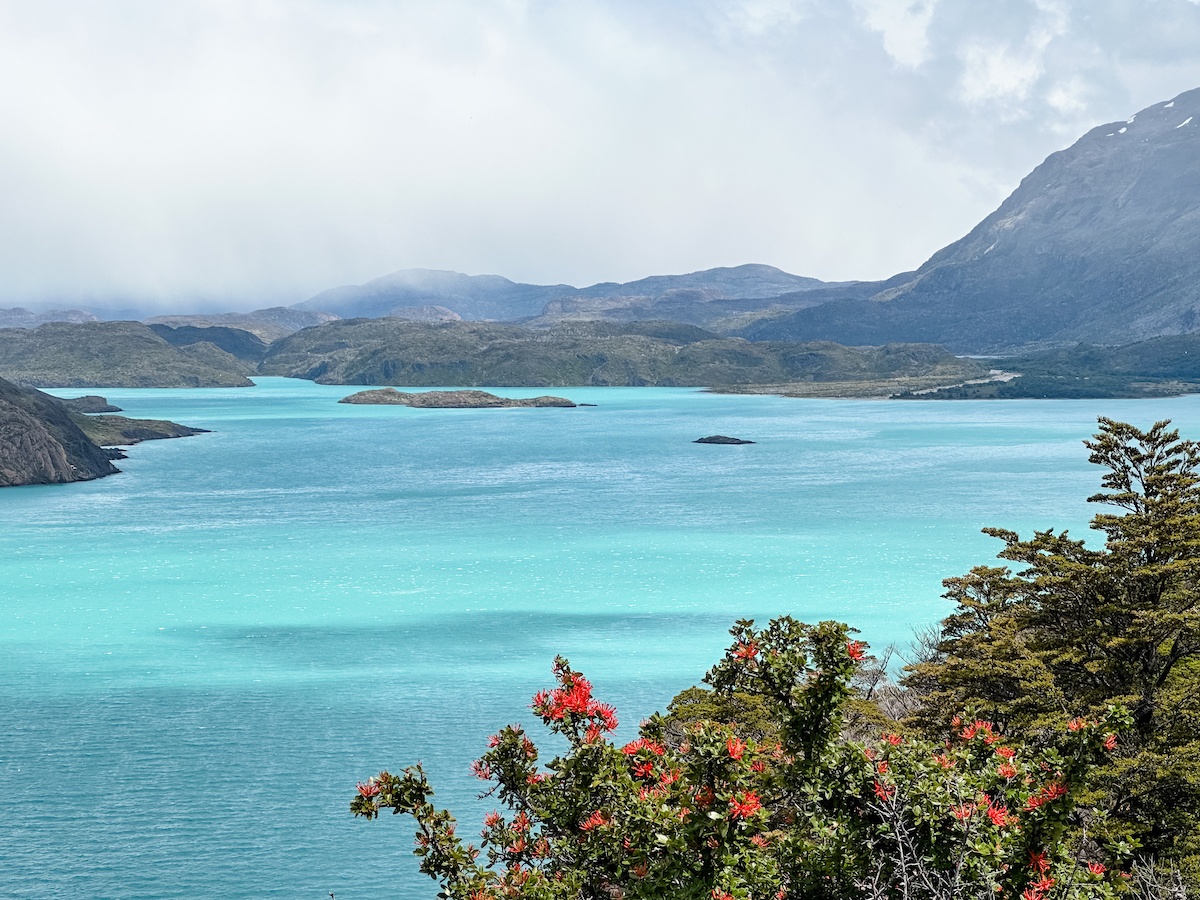
This W Trek packing list outlines every single item you’ll want to bring and a few you might not have thought of– you’ll definitely want a lightweight portable charger, collapsible hiking poles, a quick dry towel and Chilean pesos in case there’s a connectivity issue with using credit cards at the refugios.
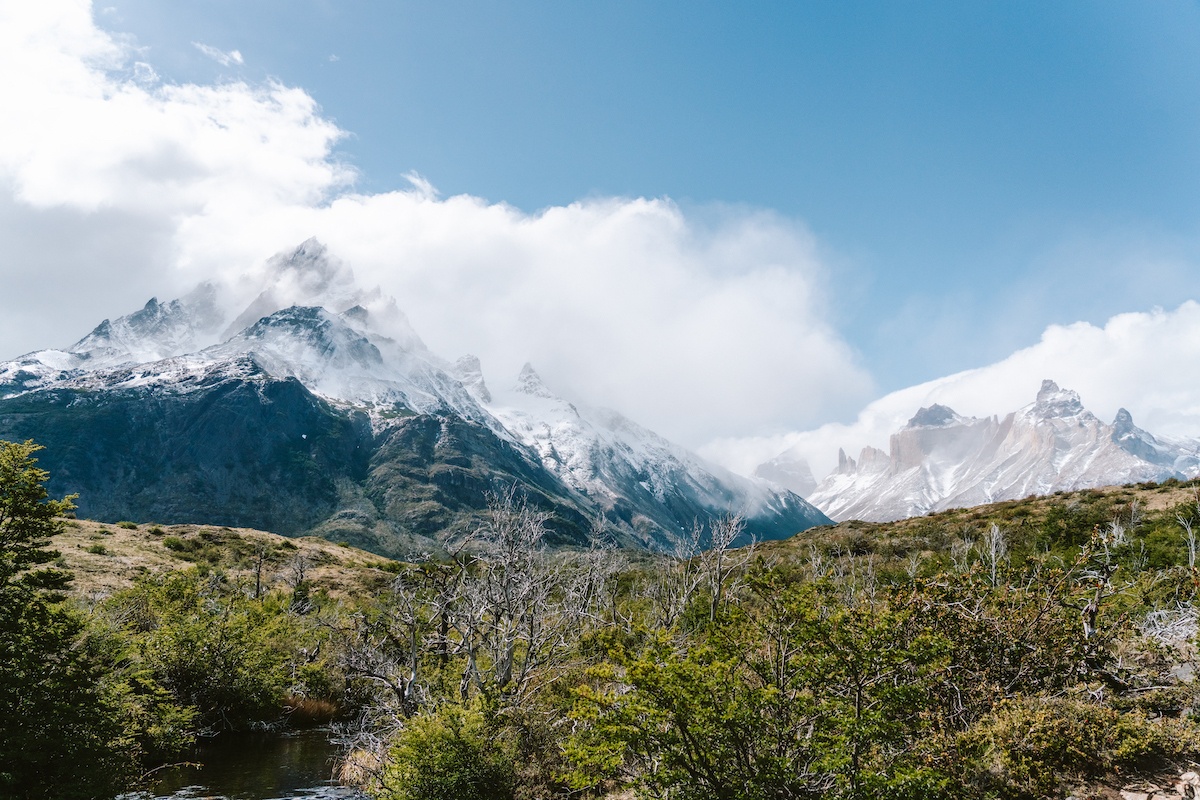
Insider tips for the W Circuit, Torres del Paine
- The Patagonia W Trek can be done all year round, but the best time is from November to March. Chile is in the southern hemisphere, so this is spring/summer when temperatures are warmer and there’s usually less rain and snow.
- If you’re planning to hike Torres del Paine without a guide, it’s critical to download a GPS map ahead of time. While the trail is generally well marked, one wrong step away from the path can get you lost in a hurry since the terrain is so untouched. Unfortunately this happened to me near Glacier Grey and resulted in a frantic 20 minutes of running up and down ravines and ridges, yelling ‘help!’ in hopes fellow hikers would hear me over the wind–luckily, a couple did. Man, was I ever thankful to see them (side note: stick with your hiking buddies!).
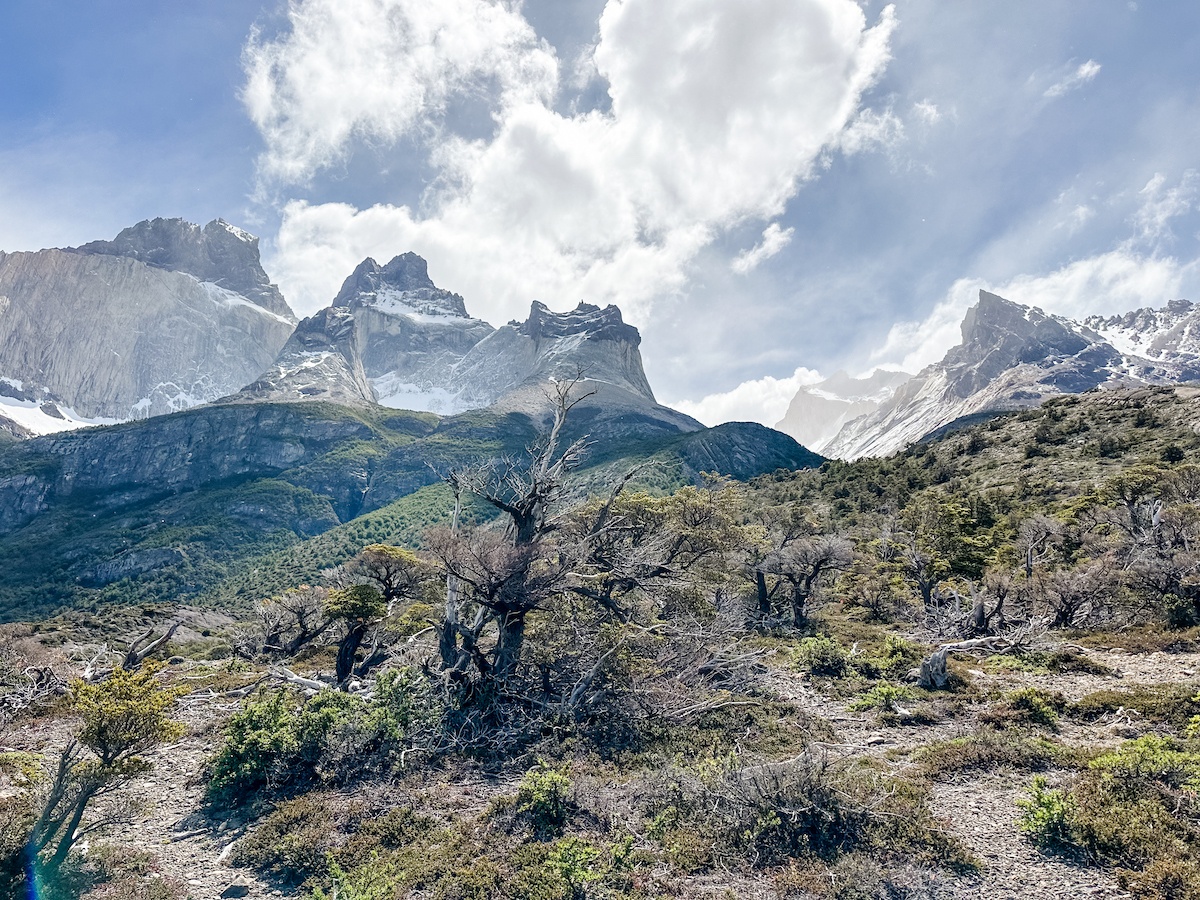
- While most people complete the W Circuit in four days straight, another option is to spend an extra day at Los Cuernos. Not only is it one of the nicest refugios with spectacular views, but that way you’ll be able to either spend the day resting up, or do the hike up to the French Valley and back to save several hours the day after by walking straight to Paine Grande.
- It’s not uncommon for refugios to ‘lose’ reservations, so bring a printed or screenshot confirmation of your booking with you on the Torres del Paine W Trek.
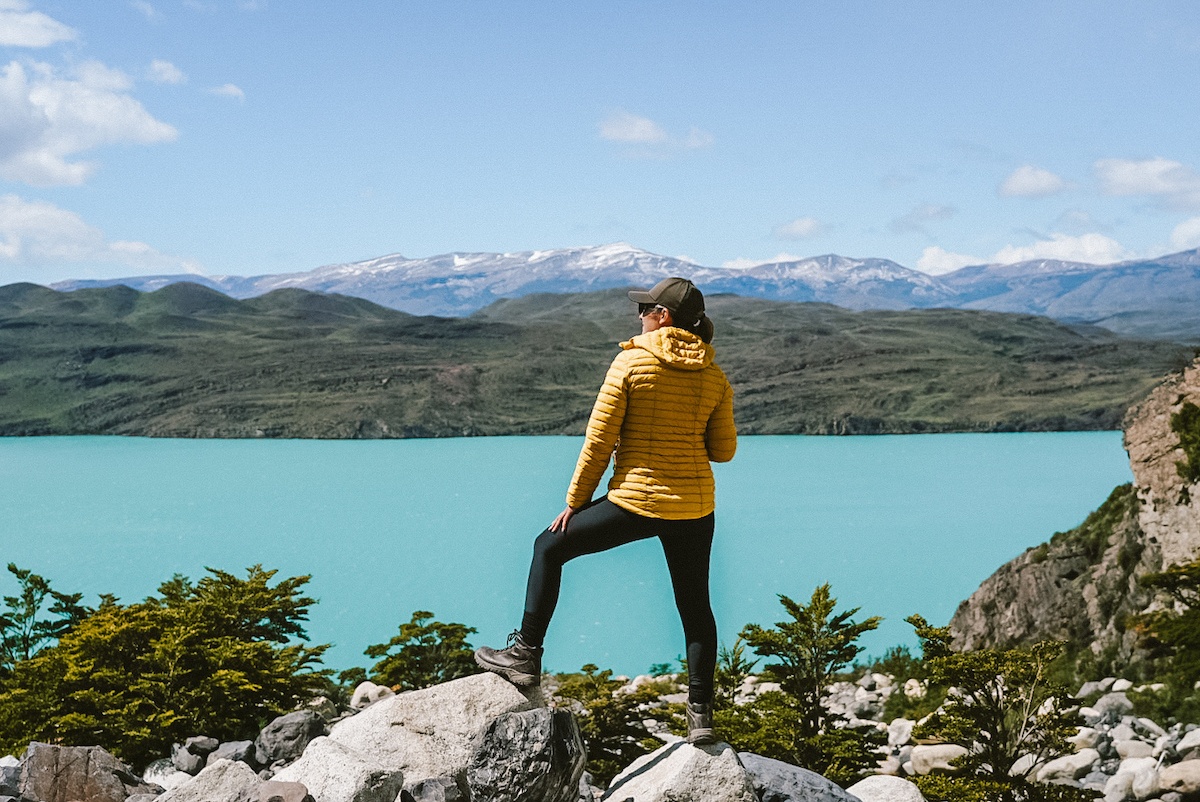
YOU MIGHT ALSO ENJOY:
- Patagonia itinerary: How to spend one week exploring southern Argentina
- 5 reasons to go backpacking in South America
- Epic hiking spots you need to add to your bucket list right now
SHARE THE PINSPIRATION! CLICK THE IMAGES BELOW TO PIN:
This post may contain affiliate links, which Globe Guide receives compensation for at no additional cost to you.

